Foundation of the Patient Experience









it’s finding product solutions
healthcare providers or competing in endurance races, Cardinal Health’s Tyler Rorrer is always looking to see how far he can push himself toward success

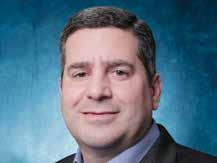
Here we are in the 11th month of the year and it’s hard to believe 2022 is coming to a close. As we finish the year, all of us at Repertoire Magazine would like to say thank you for reading the pages of our publication. We strive month in and month out to deliver content to keep you informed, entertained and armed to bring value to your clients. This would not be possible if it weren’t for the manufacturers who advertise with us each month.
I would like to challenge you as you read this month’s issue to really stop and think about the manufacturers in these pages. They are your supporters and the ones who believe in the value you bring to the industry. They believe in it so much that they put their money where their mouth is by messaging directly to you through us.
We all know this year has had its supply struggles, and many of the man ufacturers here have dealt with backorders and delays. This has obviously been difficult for you and your customers. It has also taken its toll on the manufacturers dealing with many of the issues that are out of their control. Over the next few weeks, take the time to make a list of the manufacturers you see here in Repertoire and reach out to them just to check on them and thank them for their support. Not only will this go a long way to make them feel great, but it will also make you feel great as well.
We are looking forward to 2023 as Repertoire turns 30 and the new and improved RepConnect launches in full force. This app and its new features will become your connection to the industry. We will be loading it with content for you and your clients just like we do in Repertoire. Please send us ideas on how we can continue to improve it to sadams@sharemovingmedia.com.
As I close this Publisher’s Letter, I would like to personally thank you for the job you do every day. I would also like to thank the manufacturers who support us and allow our business to thrive each year. Have a wonderful Thanksgiving month with your families.
Happy Thanksgiving, R. Scott Adams
editor
Mark Thill mthill@sharemovingmedia.com
managing editor
Graham Garrison ggarrison@sharemovingmedia.com
editor-in-chief, Dail-eNews
Pete Mercer pmercer@sharemovingmedia.com art director
Brent Cashman bcashman@sharemovingmedia.com circulation
Laura Gantert lgantert@sharemovingmedia.com
sales executive Amy Cochran acochran@sharemovingmedia.com (800) 536.5312 x5279
publisher Scott Adams sadams@sharemovingmedia.com (800) 536.5312 x5256
founder Brian Taylor btaylor@sharemovingmedia.com

www.repertoiremag.com/subscribe or (800) 536-5312 x5259
Repertoire is published monthly by Share Moving Media 1735 N. Brown Rd., Suite 140, Lawrenceville, GA 30043 Phone: (800) 536-5312, FAX: (770) 709-5432; e-mail: info@sharemovingmedia.com; www.sharemovingmedia.com













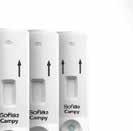






What big data is, the new tools it is creating the need for, and how it is in daily use in labs today.

Both quantitative and qualitative data have been the backbone of the lab business and its value to the clinical community since its inception. So much so that there is a widely held perception that lab data influences 7 out of 10 medical decisions. While there is no current quantitative market data to verify that bit of wisdom, we do know that over 266,000 labs are reporting patient data, with an annual spend of over $105 billion, and growing at over 9% as of 2021.
Hospital and POL testing is rebounding from the decline during the COVID pandemic and home testing is up sharply. Current estimates place the home testing market for 2022 at $1.5 bil lion and growing. So, lab clearly remains a leading factor in assessment and management of patient health. What do these trends have to do with Big Data? Everything, really. The number and com plexity of lab tests is increasing and the number of sites performing lab tests is also growing.
By Jim Poggi
Testing is becoming increas ingly de-centralized. Even more to the point, the very complex algo rithms being used to understand the predictive value of next generation sequencing for tumor cell genotypes and liquid biopsy in general has cre ated a tremendous need for more patient data to assure the predictive models are accurate and actionable by clinicians. Further complicating the situation is the introduction of over 300 new COVID assays under EUA in under two years.
As a result, the demand to acquire, store and interpret the com plex web of personal and population
data, to understand which tests are most useful, which are under or over utilized, and which have the highest positive impact on treat ment programs is becoming a promi nent concern and subject to multiple opportunities for solutions. In this column I intend to discuss what big data is, the new tools it is creating the need for, and how it is in daily use in labs today – as well as how it may be used to even greater advan tage down the road.

The term “big data” entered our vocabulary in the 1990s and has had
many interpretations and definitions since then. The one I like the best combines two different definitions that each tell part of the story.
My big data definition: “Big data refers to any data set that challenges or exceeds an individual’s ability to manually evaluate all data points for clinical relevance. The assessment of big data uses sophisticated ana lytical tools that reveal otherwise unrecognized patterns.”
What I like about this definition is that it is simple and yet insightful. First, it acknowledges that big data has so many data elements, possibly from a broad range of sources or that it needs such sophisticated data management tools that no one single person can manage to aggregate and analyze the data set.
Second, and more importantly, that the analysis of the data provides clinical relevance and also reveals otherwise unrecognized patterns. To make this situation a bit more concrete, think about the num ber of data points generated from JUST one assay in one year: Com prehensive metabolic profiles alone generated more than 582 million data points from Medicare in 2016. Considering only the top 5 lab tests that year, more than 1.45 billion data points were generated under Medicare. In any given year, tens of billions of lab data points are gen erated. That is a lot of data, and to assess and understand it requires a lot of analytical power. We will see how this power can help understand the performance of tests in develop ment, inform the clinical utility of current tests we simply assume to be useful as well as how it is used every day in the working laboratory. Along the way, big data not only creates the need for new analytical tools, but it also is creating the need for new
ways to standardize our test defini tions and results nomenclature.
There is a somewhat surprising wealth of sites where lab tests are performed. We typically think of hospitals, reference labs and physi cian offices. We also consider urgent care and free-standing emergency room settings. But, while only some of the data is associated with care for a specific patient, lab data is also col lected in manufacturer R&D settings, university and government research facilities, and the latest trend is for testing to go home.
empowered or capable of having access to all the lab data currently collected annually. While it is likely that analysis of the full set of lab data could have meaningful implications for population health and establish ment of “best practices” for which tests to order for whom and when, there are a number of philosophical and practical challenges to this sort of data aggregation. Not the least of which is how to safeguard access to the data, implications for personal data privacy and integrity and the general sense of discomfort in know ing that “someone has all the lab data somewhere and I wonder what they intend to do with it.” Many/most
groups working to standardize report ing of specific test results across net works. This is more difficult than you might believe even with estab lished CPT codes and result units of measurement.
Where is it stored? Well, that’s part of the challenge for big data and the U.S. health care system in general. Most data collected in clini cal settings specifically associated with individual patient health care is collected at the instrument level, and then reported through the laboratory information system, and ultimately to the electronic medical records and in some instances to the hospital information system. This same data gets reported to Medicare, Medicaid and a variety of private insurance companies, each of which eventually sees a subset of the data.
It is important to note that there is no oversight body currently
IDNs and other healthcare networks have the capability of aggregating the data across multiple testing plat forms within their network and the ability to extract this data, analyze it and develop conclusions from these masses of data.
Given that by definition big data does not lend itself to individual interpretation of the information, and that typical spreadsheet and data base tools were not developed with analysis of these massive data sets in mind, where is data analysis headed? First off, there are multiple
One of the more prominent leaders in codifying these data sets is LOINC, whose mission is to cre ate a universal vocabulary to identify test results to assure uniformity of reporting any specific analyte across platforms. Essentially LOINC is the vocabulary used to overlay on top of the local test result reporting of any individual reporting entity. You can think of it as the translator at the United Nations that permits any spoken language to deliver the same message to all attendees at the same time. Its adoption is growing among IDN, individual hospital and pri vate reference laboratories as well as state departments of health and manufacturers of lab and vital signs data. LOINC works with lab results but also with vital signs measure ments. Time will tell whether this will become the standard or another standard will come into play. But, one thing is certain: standardiza tion has become a powerful force in the world of lab testing, and the trend to continue to improve stan dardization will continue unabated irrespective of which standards are ultimately implemented.
New statistical tools includ ing “R statistical programming lan guage” are also making a difference since they have been specifically developed to handle these sorts of very substantial data sets and to pro vide query and analytical methods to create meaning from the data and to try to reveal previously unrecognized patterns in the data. More and more genomic laboratories in particular are adopting these types of tools.
“Big data refers to any data set that challenges or exceeds an individual’s ability to manually evaluate all data points for clinical relevance. The assessment of big data uses sophisticated analytical tools that reveal otherwise unrecognized patterns.”


Both artificial intelligence and machine learning have been touted as emerging tools to help laboratorians and clinicians find underlying connec tions, cause and effect relationships and develop actionable conclusions from masses of otherwise disparate data. The sophisticated algorithms inherent in these tools and their abil ity to become more “insightful” and useful over time are key advantages, especially in next generation sequenc ing where they are in current usage more than any other laboratory dis cipline. As an understanding of their abilities and limitations becomes clearer over time, there is no doubt that their applications will become more widespread.
In my research, I found a surprising and exciting range of applications at the individual laboratory level. One of the most interesting ones involves labs accurately assessing and modify ing the “moving averages” of nor mal values for lab results. This is a highly valuable QC tool to assure labs identify abnormal patient results rather than a shift in normal values.
Sound esoteric to you? Well, consider this: once upon a time the normal human temperature was considered 98.6 degrees Fahrenheit. That was in pre-industrial times. Today, the aver age temperature of the population in developed countries is dropping, with a recent British study pegging the average of more than 25,000 patients at 97.9 degrees Fahrenheit. So, monitoring changes in the “mean of normal values” is a very big deal.
One lab sought to ask whether folate testing was useful consider ing that abnormally low folate lev els indicate an anemia associated with insufficient folate intake from
dietary sources, which would be uncommon in the U.S. Sure enough, in a study of 89,000 folate patient results, only 4 abnormals were found. The result? That hospital lab dis continued offering folate testing as a routine procedure.
In another study, a large group of patients with uncontrolled hypertension (a serious on-going healthcare system problem) were put on a strict protocol of dietary, exercise and lifestyle management changes. The result? Over 69% of

Quickly detect and differentiate between Influenza and COVID-19 * with a single test this flu season, with clear, trusted, digital results in 15 minutes.

See what’s new at BDVeritor.com/COVID-Flu
*Emergency Use Authorization Information for the SARS-CoV-2 and SARS-CoV-2 & Flu A+B assays:
• These products have not been FDA cleared or approved; but have been authorized by FDA under EUA for use by authorized laboratories
• The BD Veritor™ System for Rapid Detection of SARS-CoV-2 has been authorized only for the detection of proteins from SARS-CoV-2, not for any other viruses or pathogens; the BD Veritor™ System for Rapid Detection of SARS-CoV-2 & Flu A+B has been authorized only for the detection of proteins from SARS-CoV-2, influenza A and influenza B, not for any other viruses or pathogens; and,


• These products are only authorized for the duration of the declaration that circumstances exist justifying the authorization of emergency use of in vitro diagnostics for detection and/or diagnosis of COVID-19 under Section 564(b)(1) of the Federal Food, Drug and Cosmetic Act, 21 U.S.C. § 360bbb-3(b)(1), unless the declaration is terminated or authorization is revoked sooner.

BD Life Sciences, 7 Loveton Circle, Sparks, MD 21152-0999 USA 800-638-8663
BD, the BD Logo and Veritor are trademarks of Becton, Dickinson and Company or its affiliates.

2021 BD. All rights reserved.

the previously uncontrolled hyper tensive patients achieved control of their hypertension.
Big data also has history on its side. Proficiency testing has been with us for many years and represents a well-established use of lab data to compare performance of individual lab results among laboratories and to rate their performance objectively. There is a substantial number of other applications including analysis of an IDN’s data from continuous glucose monitoring to determine treatment outcomes, comparison of local data sets for specific ana lytes with larger data sets, utilization data across networks (which tests are most commonly used, how they
Testing is becoming increasingly de-centralized. Even more to the point, the very complex algorithms being used to understand the predictive value of next generation sequencing for tumor cell genotypes and liquid biopsy in general has created a tremendous need for more patient data to assure the predictive models are accurate and actionable by clinicians.
impact patient treatment programs, and which need to be used more or less often). In quality control sys tems on LIS platforms, one applica tion includes determining WHICH auto verification rules can safely and effectively reduce unnecessary reflex testing. There is an emerging trend for “lab benefit managers” to review these larger data sets to set standards of which tests are medically neces sary for which patient conditions. There is a lot going on here.
Its impact on understand ing genomic data including risk assessments based on tumor geno typing is already having an impact.
These data sets are so complex and involve so many disparate data ele ments of the patient or tumor gen otype (gene translocations, substitu tions, deletions and insertions) that large scale data analysis is required to make sense of the data and to

interpret which changes in the genotype are associated with dif ferential risk of the progression of cancer as well as which treat ments can be most successful. In terms of developing new genomic and liquid biopsy tests and to also understand which markers have the most impact on patient care, big data is essential and is making powerful contributions to diagnosis, patient monitoring and treatment plan implementation.
Longitudinal patient data assess ment is a powerful application already in use in many thought leading IDN and tertiary care medi cal centers. The applications range from determining which tests are most useful for which clinical con ditions, to comparing utilization of lab tests among clinicians to determine best practices in patient management, to reducing redun dant testing patterns. Applications in quality control management are also obvious and include under standing which tests and/or which laboratorians are performing at the highest level and how to optimize results within the laboratory and among laboratories.
Big data is here and here to stay. Work actively with your key lab manufacturers and your key custom ers to understand which emerging big data elements are relevant and how you can work collaboratively to improve all three elements of value for your customer: clinical, workflow and economic value. It’s no longer just about generating and storing the data. It is becoming the need to find previously unrecog nized patterns and to find ways to harness this knowledge to improve patient care. Stay informed and stay at the cutting edge to improve your value as a lab consultant.
Finding the right testing option is always a challenge for physician offices. It’s important to find a platform that provides timely test results without sacrificing accuracy, while also being user-friendly for anyone that might need to access the platform.
In a recent podcast, Tammi Ranalli, the senior vice president of molecular diagnostics for Quidel Corporation, sat down with Repertoire Magazine publisher Scott Adams to discuss the new molecular diagnostic innovations at Quidel.
Quidel is introducing a new molecular platform, something that Ranalli calls a “10-year labor of love” to get off the ground. The Savanna sam ple-to-result molecular platform is a

cartridge-based system that is easy to use and provides incredibly fast results.

Ranalli explained, “We all know that a hospital lab or emergency department is seeing a totally dif ferent patient profile than your typi cal physician’s office. Even within physician offices, pediatricians are going to have very different needs
than a regular internal medicine specialist. We sought to provide the most flexible testing solution for different needs, without developing separate products.”
Savanna has two main features that make it a powerful tool for practices. First, Savanna provides a fast turnaround time for test results – about 20 to 30 minutes – which can greatly streamline patient care efforts for physicians and improve the impactful decision-making pro cess. The other is a feature called Test Select, a variety of customizable panel sizes that allow the end-user to either select or deselect any of the analytes on the panel. With this feature, physicians can run a wider range of tests with ease and accuracy.
“The ‘one size fits all’ approach is not really a great option when you’re trying to address the dynamic needs of different types of providers,” Ranalli said. “These panels allow for testing of multiple respiratory viruses, including RSV, influenza A and B, and COVID-19, as well as GI panels, STI panels, and a broader pharyngi tis panel. This feature puts the testing power back in the hands of the clini cian, all within the same platform.”
“Our goal at Quidel is to democ ratize the benefits that our diagnostic tests can provide,” Ranalli said. “Working together, we strive to enable access, regardless of where you live, to the kinds of fast, accurate, and cost-effective testing that will allow your doctors to chart their courses of treatment with confidence.”
Where we stand in our bid for total pandemic preparedness.
The Girl Scouts, the Boy Scouts and the U.S. Coast Guard have the right idea: They’re always prepared. It says so in their mottos. How about the healthcare supply chain? Not quite, as COVID-19 demonstrated. However, since March 2020, lawmakers and supply chain organizations have instituted and promoted many safeguards to better prepare us for next time. They include:
CARES Act.
Trucking Action Plan.
Freight Logistics Optimization Works initiative.

Ocean Shipping Reform Act of 2022.
PREVENT Pandemics Act.
A “fast pass” system for medical supplies and equipment.
So, can we say we are “always prepared?” Maybe not. But it’s safe to say we are better prepared.
“Partnerships and informationsharing between the commercial market and federal agencies have never been stronger,” says Linda Rouse O’Neill, vice president, supply chain policy, and executive branch relations, Health Industry Distribu tors Association (HIDA). Over 10 federal partners participated in dis cussions with supply chain execu tives at HIDA’s Pandemic Prepared ness Summit on how to continue to build on the partnership, the future of data sharing and communica tions, she says.
Mike Schiller, senior director of supply chain for the Association for Health Care Resource & Materi als Management (AHRMM) of the American Hospital Association, says, “We are better prepared in several aspects, and in others, the changes have been slower to come.

“The biggest factor contribut ing to our increased preparedness is the amount of public/private col laboration that is taking place – more than I can recall during the tenure of my career. Supply Chain and clini cal professionals, trade associations and other subject matter experts are working alongside regulatory experts as we identify the failure points and determine what resiliency is and what steps are necessary to build it into the health care supply chain.”
David Mintz, chief supply chain officer for NDC, believes COVID-19 has increased volatility, uncertainty, complexity and ambiguity (VUCA) for supply chains. But, he adds, “Through this experience, most supply chain professionals have improved their expertise and acu men to better manage in this envi ronment. Similarly, processes and
technologies have evolved over the last couple of years to better cope with challenges brought to light during the pandemic.”
Still, there’s plenty of work to be done, he says. “As we bolster the supply chain and continue to address both domestic and global vulner abilities exposed during the pan demic, achieving a balance between onshore and offshore partner ships will be critical. The onshor ing movement was accelerated by the pandemic, and the instabilities uncovered in the supply chain trig gered a re-evaluation of costs, risks and resilience that will drive us into a better preparedness plan.”
Enacted in March 2020, the CARES Act gave the FDA’s Center for Devices and Radiological Health (CDRH) statutory authority to help mitigate and prevent device short ages during or in advance of a public health emergency. It is the first time the FDA was given such authority.
according to the FDA. For example, the agency worked with testing and diagnostics manufacturers to help ease shortages of resins that were the result of the February 2021 Texas winter storm.

CDRH reports it is working with over 1,000 manufacturers and suppliers in 12 countries to manage and monitor supply chain shortages
trucking workforce. Seventy-two percent of goods in America are shipped by truck, and in most com munities, trucks are the only form of delivery, according to the White House. “But outdated infrastructure, the COVID-19 pandemic, and a historic volume of goods moving through our economy have strained capacity across the supply chain, including in trucking.”
The Action Plan is intended to accelerate the expansion of Reg istered Apprenticeship programs for drivers, take steps to address pandemic-driven delays in getting a commercial driver’s license, curb the proliferation of low-quality training, and expand more seamless paths for veterans and underrepresented com munities, such as women, to access good driving jobs.
Though not specifically targeting healthcare, the Biden administra tion’s Freight Logistics Optimization Works (FLOW), led by the Depart ment of Transportation, will pilot the exchange of key freight informa tion among 18 participating supply chain companies, including ports, ocean carriers, terminal operators, businesses, trucking firms and logis tics/warehousing firms.
The Act requires certain medi cal device manufacturers to provide information to the FDA on product availability and potential meaningful supply chain disruptions, during or in advance of a public health emer gency. With that authority, CDRH can better understand and monitor the complex web of supply chains that feed the medical device indus try and be more proactive in solv ing problems before they occur,
identified on the FDA shortages list, as well as other devices deemed criti cal to public health during the pan demic. The agency also says it has repurposed 130 employees to work full- or part-time on shortages.
In December 2021, the U.S. Depart ments of Transportation and Labor announced a Trucking Action Plan, intended to address shortages in the
“The goods movement chain is almost entirely privately operated and spans shipping lines, ports, ter minal operators, truckers, railroads, warehouses, and cargo owners such as retailers,” according to the White House. “These different actors have made great strides in digitizing their own internal operations, but they do not always exchange informa tion with each other. This lack of information exchange can cause delays as cargo moves from one
‘The PREVENT Pandemics Act takes a comprehensive approach to the lessons learned from the federal response to the COVID-19 pandemic.’David Mintz




part of the supply chain to another, driving up costs and increasing goods movement fragility.”
Like FLOW, the Ocean Shipping Reform Act, signed into law in June 2022, is not healthcare-specific, but its provisions will have an impact on importation of medical goods.
The Act is intended to con trol “demurrage and detention” fees for shipping containers, which rose dramatically during COVID-19. (“Demurrage” refers to charges raised when a full container is not moved out of the port terminal for unpacking within the allowed free days offered by the shipping line, according to Chicago-based logistics firm project44. “Deten tion” refers to fees raised when the importer picks up the container for unpacking but has not returned the empty container to the depot within the agreed free-time.)
FLOW increases the authority of the Federal Maritime Commis sion to investigate complaints about detention and demurrage charges charged by common ocean carriers, and order refunds for unreasonable charges. It also prohibits common ocean carriers, marine terminal oper ators or ocean transportation inter mediaries from unreasonably refus ing available cargo space.
In March 2022, two U.S. sena tors introduced the Prepare for and Respond to Existing Viruses, Emerging New Threats, and Pan demics Act (PREVENT Pandemics Act), intended to strengthen pub lic health and medical preparedness and response systems in the wake of COVID-19.
Among other provisions, the Act –
which was pending in the Senate as of mid-September – calls for estab lishment of an Office of Pandemic Preparedness and Response Policy (OPPRP) within the Executive Office of the President to advise on pan demic preparedness and response pol icy and support coordination within the federal government related to it.
If passed, the Act would pick up several pieces from earlier proposed legislation to improve the Strategic National Stockpile (SNS). For exam ple, it would: ʯ Amend the SNS Annual ThreatBased Review to include an assessment of the supply chains and any vulnerabilities for prod ucts that SNS plans to purchase.
Clarify that the Department of Health and Human Services should ensure that items in the stockpile are in working condition so they can be readily deployed when needed.

Require that HHS issue guidance on how states, territories, and Tribes can access the SNS.
Authorize HHS to enter into contracts for the SNS to enhance surge capacity and supply chain flexibility through vendor-managed inventory and warm-base domestic manufacturing arrangements.
Authorize HHS to sell excess products from the SNS to other entities when the cost of main taining these products in the SNS is not appropriate to meet the needs of the SNS.
The PREVENT Pandemics Act has received endorsements from HIDA as well as the National Governors Association.
“The PREVENT Pandemics Act takes a comprehensive approach to the lessons learned from the fed eral response to the COVID-19 pandemic,” says Patrick Bailey, vice president, Congressional relations,
‘Long term, we are working on legislation to establish a fast pass pilot program for critical cargo such as medical products.’


HIDA. “It includes input from indus try, including HIDA, that recognizes the vital role of public-private part nerships in managing medical sup plies during a pandemic.”
The National Governors Asso ciation expressed its support for the PREVENT Pandemics Act in a letter in April to the sponsoring senators. “During the early phase of the pandemic, when PPE shortages were widespread, governors did not have transparency into what was in the Strategic National Stockpile and how decisions were being made on the distribution of these critical sup plies,” they wrote. “States scrambled to find essential medical supplies and competed against ourselves and the federal government to procure those scarce supplies.
“It is critical that the federal government be transparent with governors as to what is in the SNS, assist states in maintaining adequate and updated medical supplies in their state stockpiles, incentivize domestic manufacturing of PPE and medical supplies, and ensure an equitable and fair distribution of federal support in order to mitigate the spread and reduce the impact of future pandemics.”
HIDA and two other groups – the Advanced Medical Technology Association (AdvaMed) and Inter national Safety Equipment Associa tion (ISEA) have expressed support for a Critical Cargo Program, or “fast pass” system, which would pri oritize critical medical supplies and equipment during current and future pandemics, and align transporta tion operations – shipping, railroad, trucking and small parcel carriers –to support healthcare during public health emergencies.
In an October 2021 letter to the U.S. Department of Transportation, HIDA’s Linda Rouse O’Neill pointed out the plan, if implemented, would:
ʯ Prioritize critical supplies for con tainer access and sea freight space.
ʯ Ensure first available railcar and chassis.
ʯ
Provide for 24/7 transportation operations during a public health emergency.
response that can be used during the next adverse event.
ʯ
Develop an intermodal commu nication plan on when and how medical products can be accessed.
“As leaders in our industry, it is incumbent on us to keep this synergy going so the next set of stakehold ers won’t have to reinvent the wheel for the next challenge. Additionally, we need to work with policymakers for constant and reliable funding to carry forward the partnerships and collaborative work done through the COVID-19 response.”
Says Mintz, “In addition to the many initiatives, time will also be a
“Through our Shipping Council, HIDA has brought together dis tributors with port officials to expe dite medical products through ports such as Los Angeles, Long Beach, Savannah and the Port Author ity of New York & New Jersey,” O’Neill said in September. “We have brought the issue to the atten tion of federal officials at the Fed eral Maritime Commission and U.S. Department of Transportation. We are encouraged by this outreach.
Long term, we are working on leg islation to establish a fast pass pilot program for critical cargo such as medical products.”
While the U.S. healthcare system may be better prepared than it was before the pandemic, it must sustain certain “touch points,” such as strengthen ing of the Strategic National Stock pile, says O’Neill. “Otherwise, we will lose the ‘muscle memory’ of crisis
factor towards improving U.S. pre paredness. The pandemic continues to significantly change demand pat terns and supply capacities, often cre ating meaningful imbalances that lead to shortages. Over time, as specific markets become more stable, mar ket forces coupled with technological innovations will naturally drive supply and demand into better alignment.”
Mike Schiller of AHRMM believes that “many moving parts need to be aligned before a compre hensive resiliency solution is in place – not just within the U.S. health care supply chain, but the global supply chain. Resiliency comes at a cost.
Onshore/near-shore manufactur ing, multisource contracts, building buffer inventory within the existing supply chain infrastructure, align ing incentives and the thoughtful adoption of technology will all require culture change, consider able financial and human resources, and process redesign.”
‘The pandemic continues to significantly change demand patterns and supply capacities, often creating meaningful imbalances that lead to shortages.’


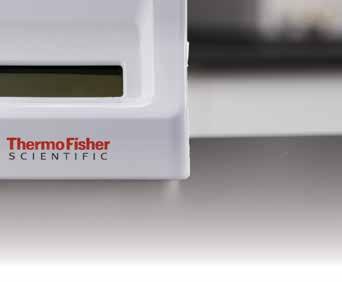

B. Braun launched its Peripheral Advantage program in 2021, giving healthcare staffs the tools, training and insights needed to confidently deliver consistent PIVC (peripheral intravenous catheter) care and a better patient experience. The program is available to all hospitals nationwide.
PIVC restarts can subject patients to discomfort and greater risk of infec tion and other complications. Yet only 57% or less of nursing students receive any form of PIVC training.1 Peripheral Advantage is designed to optimize clinical skills and product perfor mance for better clinical outcomes.
The comprehensive program combines clinical instruction, datadriven insights, and advanced tools to empower nurses to achieve firststick success and help prevent many of the complications associated with peripheral IV therapy.
This value-added program is one way B. Braun, an infusion therapy and pain management leader, is providing value to its customers.
“We’re committed to helping our customers improve the overall patient experience,” said Brett Sarnoff, Vice President of Marketing, Medi cal Device & Pharma Systems with B. Braun. “We know providers are
challenged to deliver optimal care, especially right now, without all of the resources they need. Our focus is getting them the resources, especially around convenience.”
B. Braun develops KPIs with its customers so it can be held account able to deliver on outcomes.
“We’ve always focused on value propositions and supporting our cus tomers,” Sarnoff added. “There are so many shortages in nursing and throughout hospitals today, and this program is about giving providers the right products and creating a differen tiation for our products as well.”
After implementation of B. Braun’s Peripheral Advantage program, results may include hospital system improvements of clinical, operational, and financial outcomes.
“The program combines bestin-class training and curriculum with innovative products and tech nology designed to help hospital staff deliver safe and consistent peripheral IV care,” said Aime Lenz, Group Product Director, ValueAdded Programs with B. Braun. “The Peripheral Advantage Pro gram, along with our collaboration with The Association of Vascular Access, creates an ecosystem for our customers to address peripheral IV
education in the hospital setting and in healthcare schools.”
Lenz said B. Braun is concen trated on new advancements in vir tual and online education to reach a broader audience.
“Healthcare providers want more options for online education and a better overall experience with it, so we’re continuing our strategic alliances and adding new research and innovation alliances as well,” she said. “Better IV education and tech nology addresses a critical gap across the healthcare continuum.”
For example, B. Braun’s vein visualization technology through its VeinViewer® product helps clinicians experience consistent first-stick suc cess, helping to ensure the IV is placed correctly on the first try. This benefits patients at hospitals, ambulatory surgery centers, infusion clinics and anywhere patients need routine care beyond the acute care setting.
The Peripheral Advantage pro gram includes professional on-site clinical instruction with B. Braun’s PIVC clinical experts. Training is pro vided on a complete set of cut ting edge tools like the Company’s STEADYCARE™ Extension Set Tech nology, which helps stabilize the cath eter and maintain the insertion angle.



Supply chain leaders discuss how IDNs are creating a happier, healthier and safer workplace environments.
By Pete MercerWithin the last few years, healthcare workers have been through a lot. While it was already a difficult profession, COVID-19 pulled back the curtains on the frailties of the American healthcare supply chain, leaving many healthcare workers without the proper PPE in the initial days of the pandemic to protect themselves or the supplies to take care of their patients.
If that weren’t enough, staff ing shortages have stretched health care workers beyond their breaking point, creating hazardous working environments in an already difficult profession. The peaks and troughs of COVID waves add to a mount ing pressure, causing more healthcare
workers to leave the industry than ever before. While COVID isn’t quite the same challenge as it was a couple of years ago, it’s still lurking around the edges. Is there anything that can be done to remedy this situation?
“The last two years have created stress shift overload and burnout
among our nation’s healthcare work ers, and we wanted to learn strate gies that supply chain leaders used in several IDNs to reduce burnout and create a more enjoyable and safer workplace environment,” said John Pritchard, publisher, The Journal of Healthcare Contracting
In a recent webinar, JHC’s Pritchard discussed how IDNs are creating a happier, healthier and safer work place environment with guests:
ʯ
Cheryl Saxby, assistant vice president of specialty sourcing and caregiver engagement at St. Joseph Hospital
the stress and burden of the early COVID days.
ʯ
Clinton Hazziez, vice president, supply chain and strategic sourc ing at Baylor Scott & White
ʯ
John Horne, chief strategic sourcing officer at Bon Secours
Mercy Health
ʯ Ed Hisscock, senior vice president, supply chain at Trinity Health
No one had seen anything like this before. “Unprecedented times” was an apt, if overused, description of the chaos of the early days of the pandemic. While that chaos was not limited to a single industry, health care faced a unique set of challenges.
Caregivers were hit hard and quickly by an onslaught of sick patients, coupled with a frustrating concoction of staff and supply short ages that made an already difficult line of work that much harder. Burnout quickly became a serious issue, as healthcare workers had to overcom pensate for these shortages with over time and upskilling in an environment that put them directly in contact with multitudes of sick patients.
In the early days, people lined up on the streets in major cities during hospital shift changes, cheering for their local healthcare heroes. Apparel brands and other businesses offered discounts for healthcare workers, in a period of unity and support for those who have worked the front lines of the industry for years. Inte grated delivery networks (IDNs) were also looking for ways to ease
“One of the strategies we’ve pushed forward is a colleague care team. We’ve selected some people and they come from all different walks of life. There are some change management experts, there are some folks that are from our HR team with various levels of expertise,” said Hisscock. “Basically, what we’re doing is we are taking colleagues offline. Their full-time role is to interview other colleagues on what’s going on, how they are feeling.”
Hisscock says that it may seem a little “touchy feely”, but the data they have collected from these inter actions is invaluable, allowing Trinity Health to make the necessary tweaks to avoid further caregiver burnout in the future.
Horne, of Bon Secours Health, said “We developed new recognition tools to recognize excellent care and provision of excellent services. We developed spot bonuses where direc tors or department heads could pro vide spot bonuses for employees that were going above and beyond.” Bon Secours Health also implemented timeoff opportunities for their employees, mass shipments of branded t-shirts or facemasks, and even a “no-meetingFriday” once a month.
Baylor Scott & White’s Clinton Hazziez stressed the importance of communication and leading with compassion. He said, “I think that IDN executives understood the importance of at least acknowledg ing the challenges that we were up against on the frontline. It was very important that there was an aware ness and acknowledgment of the effort and sacrifice. From the top down, it was a conversation about being a compassionate leader and putting the people first.”
One of the first – and still present –challenges of the pandemic was the disruption to the supply chain. While grocery stores couldn’t keep shelves stocked as consumers “panic pur chased” seemingly innocuous items, hospitals faced a steeper challenge of stocking necessary PPE equipment and supplies to provide patient care.
“This was a big deal because people were stressed out about the supply chain shortages,” said Cheryl Saxby of St. Joseph’s Hospital. “We had a nursing team collaboration that we pulled together to review the substituted back-order items. We reviewed those items, inspect ing them to ensure they were up to standards before bringing them into our facility.”
Saxby’s team also included clini cal people to ensure that the incom ing products met the clinical stan dards they needed. “We also worked with some suppliers on allocations and identifying needs. Everyone was pushing and pulling, trying to get everything that they could get their hands on during that time, so we did pull some major suppliers together to work on that.”
St. Joseph’s also implemented a “stoplight tool” that notified all sup ply chain and frontline employees and the executives on what stock was running low, what they needed to do about it, and how they could reduce waste throughout the organization.
At Baylor Scott & White, Hazziez and his team learned that the clinical requirements needed to be aligned with the product specifications so that they could more rapidly and effi ciently source and procure the goods.
He said, “I think we learned the importance of understanding clinical requirements and being able to estab lish those in a very matter-of-fact way,
promoting more of a rapid sourcing environment. If we knew what the clinical requirements were, sourcing teams could go out and find those product specs that met those needs.”
The windows of opportunity were so rare, closing as quickly as they had opened. Armed with that intelligence, Hazziez and his team were able to take advantage of those opportunities, mitigating some of the disruptions for Baylor Scott & White.
and collaborating with their prime MedSource distributor, they were able to hold pieces of 3PL inventory. “We could load our 3PL products on the rails and the trucks of the distrib utor and have that product delivered seamlessly like everything else.”
He continued, “It required far less stockpiling at the local level, and it created efficiencies in the distribution of that product.” They used a simi lar strategy to store COVID vaccines at the necessary temperature – for
do in rounding: listen, respond, and just demonstrate that you care.” He described that initiative as a powerful way for those in positions of lead ership to get out of their comfort zones – corporate offices, cubicles, home offices etc. – and work with the frontline. He said, “They came back with a lot more compassion and recognition of just what these folks were going through.”
Saxby and her team took the opportunity to recognize and cele brate the hard work of the caregivers during this time. Every quarter, they hosted a Caregiver Connect session, where her team would sit down with the caregivers and discuss how they were doing and what St. Joseph’s could do to help.
Knowing that the supply chain issues haven’t gone away, Hazziez is still stressing this mentality to his team, saying, “We have to be more disciplined about building more redundancy in our supply chain because things are flaring up on the manufacturing side, on the sourcing side, and on the logistics side. We have to bake in these redundancies so that our supply chain stays resilient.”
Despite the challenges in the last couple of years, as well as the con tinued supply disruptions, how are IDNs faring in making the care set ting a little happier, smoother, and less stressful?
For Bons Secours Health, Horne says that it started with creating effi ciencies in the distribution of the supplies they needed. By leveraging
instance, Pfizer’s vaccine has to be refrigerated to an extremely cold temperature – working with their gas suppliers to get daily deliveries of dry ice in massive containers. Through this collaboration, they were able to keep the Pfizer vaccine cold and viable, creating a smoother delivery of vaccines to Bons Secours Health’s 60,000+ employees.
At Trinity Health, Hisscock and his leadership team had an oppor tunity to get in on the action for themselves. With support staff at the hospitals dwindling, Trinity was filling those shifts with members of leadership from the corporate office and the ministries.
Hisscock, speaking on this unique opportunity, said, “What that did was put us directly in service to the caregivers. It created a lot of opportunities for us to do what you
“For the National Healthcare Supply Chain Week, we made that a bigger deal than we usually do. We wanted to make sure that care givers have time to take breaks. We hosted games, gave out gifts, happy hours, and meals together where we could. Having those things was really helpful to take some of that stress out of their life during this time,” Saxby said.
Even with all the chaos happen ing during any given day, Hazziez understood that even the little things mattered to caregivers during this time period. “The simple things like ‘Can you guys keep up with the mask extenders?’ Because it made it more comfortable for nurses to wear the masks for extended hours.” He and his team developed utilization mod els that allocated certain products because clinicians needed them.
Finding those small gestures went a long way to making life easier for caregivers. Hazziez said, “It was just the little things to make sure that were being attentive to the needs of the folks on the frontline.”
“For the National Healthcare Supply Chain Week, we made that a bigger deal than we usually do. We wanted to make sure that caregivers have time to take breaks. We hosted games, gave out gifts, happy hours, and meals together where we could.”

and your
MTMC
solutions—BD PosiFlush Pre-filled Syringes,
IV
Site
a
at each step
of medication
Port Access Kits and Huber Needle Sets,
Properative Skin Preparation with
Gravity and Syringe
Solution™,
PureHub™
by robust sales
A new analysis prepared by Kaufman, Hall & Associates, LLC and released recently by the Ameri can Hospital Association shows that hospitals and health systems con tinue to face intense pressure on staff and resources while also deal ing with rising expenses for supplies, drugs and equipment, as well as for the workforce.
According to the analysis, the trends are expected to continue through 2022, with losses in the bil lions of dollars for hospitals and health systems, resulting in the most financially difficult year for the field since the beginning of the COVID19 pandemic in early 2020.

The first half of 2022 has severely tested hospitals and health systems due to the impacts of COVID-19 surges, increased expenses and a lack of COVID-19 relief funding. As a result, even the most optimistic projections for the entirety of 2022 indicate margins will be down 37% compared to prepandemic levels, with more than half of hospitals operating in the red.
Under a pessimistic scenario for the rest of 2022, margins could be down as much as 133% compared to pre-pandemic levels, with over two-thirds of hospitals operating in the red.
Hospital and health system expenses are expected to increase by nearly $135 billion this year over 2021 levels with a large component
of that deriving from expenses related to retaining and support ing the workforce. Employed labor expenses are projected to rise by $57 billion more than last year and contract labor by $29 billion. In fact, contract labor expenses alone are nearly 500% higher than prepandemic levels, which has played a significant role in driving expense growth for hospitals. The remaining $49 billion in added expenses in 2022 include those for supplies, drugs and equipment, which have all experi enced significant growth from prepandemic levels.
Emory Healthcare announced it will migrate from Cerner’s electronic medical record to Epic’s integrated and comprehensive health care soft ware, effective Oct. 1, 2022. With this progress, patients can expect to see an advanced patient experience and care team members will find more integration and alignment of services across the health care system.
Emory Healthcare’s long relation ship with Cerner has been productive and served its patients and commu nity well, a release said. Moving to Epic will allow the health system to align its hospitals and clinics onto one integrated, modernized platform –accelerating quality improvements, supporting best-in-class patient expe riences and improving the electronic health record (EHR) experience for care team members. The col laboration with Epic will also improve Emory Healthcare’s ability to seamlessly share patient records and care information within Emory
locations and across organizations, while offering optimal self-service options for patients.
“What excites us most about this transition to a fully integrated, unified clinical and billing system are the bene fits to our patients, care team members and clinicians,” says Dane Peterson, interim CEO and current president and COO of Emory Healthcare. “We believe having all of our entities on one integrated platform will bring great value. Consistent with our Care Trans formation Model, patients remain at the center of all of our decisions.”
Mayo Clinic is expanding its strategic 12-year relationship with nference, a health technology company driven by artificial intelligence (AI). This relation ship provides nference partners and customers with access to Mayo Clinic Platform’s extensive de-identified electronic health data across a range of disease and therapeutic areas. nference has launched its AIdriven nSights platform, which will allow biopharmaceutical and medi cal device companies, as well as diag nostic firms, to access and work with curated, de-identified health care data to advance research and discovery.
The expanded collaboration will increase access to data-derived insights and knowledge by estab lishing a Mayo-branded version of nSights, called Mayo Clinic Plat form_Discover. It will be built and supported by nference to help health care innovators solve some of the most complex clinical challenges.
To unlock actionable information, the data sets are:
Deep – Data can be analyzed accurately for reliable information that is relevant and actionable.

ʯ Curated – Data are from diverse sources and can be integrated in repositories and authenticated and archived.
ʯ Patient level – Data are anony mous and collected in real time, aiming to eliminate interviewer bias or recall errors.
Across therapeutic areas –Data range from cardiology to oncology, and immunology to infectious diseases
Structured and unstructured –Data are from multiple sources, including clinical notes and lab test results.
RWJBarnabas Health opens innovation center to study promising digital health tools Robert Wood Johnson University Hospital (RWJUH), an RWJBarn abas Health facility, and Rutgers Rob ert Wood Johnson Medical School (RWJMS) launched a new model for medical research and innovation at the grand opening of its Center
for Innovation, located on the main campus of the hospital.
The Center for Innovation is a partnership between RWJUH and Rutgers RWJMS to bring together clinicians, researchers and private industry to invent and develop new technologies that address both complex and common health care issues. The ultimate goal is to develop innovative clinical trials that yield medical breakthroughs to improve preventive care and health outcomes for patients.
The center’s concept and design were led by the Cardiovascular Ser vices team under the direction of Partho Sengupta, MD, FACC, but it is designed for use across all clinical teams and disciplines. Dr. Sengupta is the Henry Rutgers Professor of Cardiology and Chief of the Divi sion of Cardiovascular Disease and Hypertension at RWJMS, and Chief of Cardiology at RWJUH, and is a member of the Combined Medical Group of RWJBarnabas Health and Rutgers Health. The center was made possible via donor funding from the RWJ University Hospital Foundation.
The center’s core team for digi tal transformation will be led by Naveena Yanamala, PhD, Director of Artificial Intelligence and Data Science in the Division of Cardio vascular Disease and Hypertension, RWJMS. Examples of the technol ogy under development at the Cen ter include the use of ear buds to provide real-time heart rhythm met rics such as heart rate and heart rate variability; a medical vest with sen sors that can be placed on a patient to record – without blood draw and analysis – “markers” or vital infor mation that may indicate a heart attack; and hand-held mobile EKG technology as a replacement for use of a stethoscope.
One of several things the pandemic made clear was the importance of hand hygiene and infection preven tion best practices. Experts globally, from the World Health Organiza tion (WHO) to the Centers for Disease Control and Prevention (CDC), strongly agree that promot ing – and practicing – good hand hygiene is an effective way to wash away or kill germs that may cause illness. According to a survey by the American Cleaning Institute (ACI) conducted in March 2020 and again in September 2021, 93% of those surveyed said they are more likely to continue their hand hygiene habits in the coming months than any other health measures, including wearing a mask or social distancing1 .
All hand sanitizers are regulated by the Food and Drug Administration (FDA) as over-the-counter drugs. The FDA’s 1994 Healthcare Topical Antiseptics Tentative Final Mono graph (TFM) states hand sanitizers used in healthcare settings must pass two types of efficacy tests – an in vitro test to demonstrate the broadspectrum antibacterial characteristic
and an in vivo test demonstrating effectiveness on hands. The in vivo test is a standardized method and called the Healthcare Personnel Handwash Test (HCPHW). The TFM mandates hand sanitizers achieve a specific bacterial reduction on hands after one use and another benchmark of bacterial reduction with repeated use. FDA stated that after one use or application, a hand sanitizer must reduce bacteria by 99% and the sanitizer must reduce the bacterial load by 99.9% at the 10th application.
Another pandemic lesson – not all hand sanitizers are created equal. Some products lose efficacy the more times you consecutively apply them2 This happens when ingredients build up on hands and inhibit the sanitizer from effectively killing bacteria and achieving HCPHW efficacy. When using hand sanitizers, the ideal state is for efficacy to increase with repeated use, or simply maintain efficacy levels – never decrease. This is especially true for healthcare workers (HCW), who may use hand sanitizer upwards of 100 times in a single shift!
In addition to efficacy, how the product feels to HCW during use
(aesthetics) and the impact that prod uct has on skin health. While efficacy is a critical mandate, if the sanitizer smells, is sticky or slimy during use, or if it is poorly formulated and negatively impacts HCW skin condi tion – they will not want to use it. If HCW don’t use the hand sanitizer, then what good is it? Achieving the required HCPHW test efficacy, with a product that promotes good skin health and is preferred by HCW should be the goal of every health care hand sanitizer.
For more than 30 years GOJO has carefully formulated and tested its proprietary hand sanitizers to kill germs, be gentle on skin, have a great user experience, and be safe to use. It took a relentless focus on industry-shaping science based on evidence to develop and improve the category of instant hand sanitizers. Today, GOJO is the global leader in healthy skin and healthy places, and PURELL® is America’s #1 Hand Sanitizer3 with the PURELL® brand recognized as a symbol of safety and efficacy, providing powerful peace of mind. These efforts combine to help keep HCW, patients, residents, and visitors safe.
PURELL® products are designed for high-frequency use in hospitals, and PURELL® Advanced Hand Sanitizer is the #1 brand of hand sanitizer used in hospitals.1 When patients, visitors, and staff see the PURELL brand, it reinforces your high standards for patient safety and quality care.
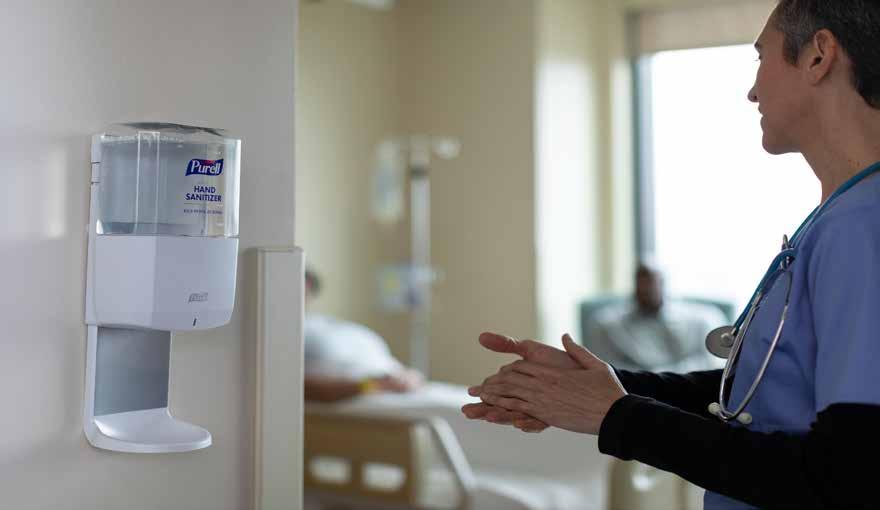
PURELL products are designed for healthcare, using our most advanced science to exceed healthcare demands – hand sanitizers that meet FDA requirements in a single dose,2 soap products that are gentle on skin even with repeated use, and a complete set of solutions to effectively and efficiently monitor hand hygiene performance.

Learn more at gojo.com/rep8
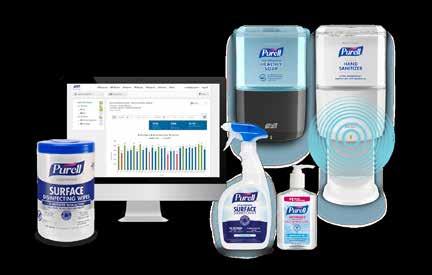


In medical equipment sales, accuracy, durability, ease of use, financing and revenue potential must be addressed in the sales process. But there’s another subject for discus sion with prospects: How will patients experience the treat ment they receive from the clinician using your equipment? It’s an important point, and one your customers are think ing about. The federal Consumer Assessment of Healthcare Providers and Systems (CAHPS) surveys measure it every day, and reimbursement depends in part on the results. Patient experience is not the same as patient satisfac tion. Rather than focusing on amenities, surveys such as CAHPS focus on how patients experienced or perceived key aspects of their care, including the quality of commu nication with their providers, the clarity of instructions they received, the overall concern by staff for their wellbeing, and the degree to which the medical team worked together to coordinate their care. The equipment they use can work in their favor.
“Many years ago, we came to realize that the equipment itself is just one of the pillars for an effective point-ofcare design that can facilitate a positive experience for both patient AND caregiver,” says Tom Schwieterman, M.D., MBA, chief medical officer and vice president of clinical affairs for Midmark. “Our role is not to provide the care itself, but rather to establish an effective eco system that facilitates and supports, empowering expert clinicians to achieve excellence in their care management.
“As an analogy, think of a Broadway show. Midmark would be the theater owner, not the show itself. Our role is not script, orchestra music or cast. However, we would design the seating, orchestra pit and stage, lighting, concessions and the means for staging between acts. To create the perfect setting for the production, we would need to know the storyline and setting intimately.
“Within the theater, we would ensure that all criti cal elements were received by the audience in their full est extent and are enjoyed in a comfortable and engaging manner. We would design the theater seats to avoid any barriers to a view of the stage so the cast can develop intimacy with the audience.
“If these things are not done well, the show will ulti mately fail no matter how well the cast performs a Tony award-winning story.”
Equipment designed with the patient in mind can enhance patient experience, according to those with whom Repertoire spoke. Professional scales offer a case in point.

“Weight is an important vital sign in many treatment scenarios,” says Ken Harris, executive vice president, sales and marketing, Pelstar LLC/Health o meter Professional Scales. “And while scales are generally straightforward to use, many patients who interact with our products may be injured, weak, unstable, or simply uncomfortable sharing their weight with others.
“Scales that are easy to get on and off, have platforms sized to comfortably accommodate larger or unstable patients, and have scale-mounted handrails that can help steady patients during weighings can reduce or eliminate the stress and discomfort patients can feel. Additionally, placing the scale in an area with appropriate seclusion can
reduce the discomfort patients may feel if they believe other people can see them getting weighed.

“Selecting a scale that is the appropriate size to accommodate patients is a critical first step to enhanc ing a patient’s experience,” he adds. “It’s important to keep in mind that scale size does not always correlate to the size of the patient. Older patients or patients who are unsteady will also benefit from larger scale platforms. Having a scale that can weigh patients in a wheelchair can eliminate the need and associated effort for a patient to get out of their chair to be weighed.”
Janis Dezso, vice president of sales, global distribu tion, for Symmetry Surgical, says any equipment can be intimidating to a patient. That’s why the company designs its electrosurgical generators and smoke evacuators to be as quiet as regulations will allow and aesthetically designed to blend into the physician’s office, she says. “They can either hang on the wall or be added to a cart that can be moved in and out of the office as needed.”
When presenting Symmetry Surgical equipment, sales reps can help their customers enhance the patient experi ence simply through good communication, says Dezso.
The company recommends that users of its equip ment advise patients of any sounds the machine might make. “For example, when the unit is activated, it makes a beeping sound. Knowing this in advance prevents the
Is it the common cold, the flu, or something else? An accurate diagnosis can be a challenge which is why a rapid influenza test that enables the early recognition of patients with influenza has many advantages*. The OSOM® Ultra Plus Flu A&B Test is affordable, fast, and objective, it can assist physicians in determining proper treatment, helping to reduce overall healthcare costs which is awesome, yes OSOM®.


patient from getting startled. Also, it is best to advise the patient that electrosurgery has a unique smell that some patients may not like. We recommend that a smoke evacu ator be used to minimize the smoke plume and odor.”
Michael Suits, senior marketing specialist, physical assessment, for Baxter, says “a patient’s experience may be improved with the perception that their clinician is using the most advanced technologies available, but only if this equipment facilitates and enhances the clinicianpatient relationship. When speaking with clinicians, we not only discuss the technical features of our products, but also how they can help improve efficiency and col laboration with both patients and colleagues, which are important considerations.
“Time is a major consideration for both busy patients and physicians, so medical equipment that helps improve efficiency provides significant value,” he says. He points out the Welch Allyn Connex Spot Monitor can capture a full set of vital signs in less than a minute, providing important data to the clinician that informs the rest of the exam.
“Patients also value transparency and may want to feel like partners in their own care,” says Suits. “Clinicians
can use physical exam tools like the MacroView Plus Otoscope with iExaminer to make exams more interac tive for patients by showing them actual digital images of the ear, versus having to describe what they see verbally or in the electronic medical record. This digital technol ogy has the added benefit of enabling clinicians to upload images and share them with colleagues or specialists, potentially saving the patient time and money by avoiding an unnecessary visit to a specialist or preventing unneces sary prescribing of antibiotics.”
Distributors shouldn’t miss the opportunity to demonstrate to clinicians how digital capabilities can enhance their practice, he adds. “Communication with digital images – and being able to send them directly to the EMR and other providers – is a significant step forward in physical exams. In addition, it has been dem onstrated that a single digital image of the tympanic membrane obtained by a smartphone-enabled otoscope resulted in correct diagnosis of 96% normal tympanic membranes and 100% abnormal tympanic membranes. This provides assurance that quality care is being deliv ered to patients, likely resulting in improved patient and clinician experience.”
Supporting you and your non-acute customers better than ever

MEGADYNE™ portfolio is now represented by MTMC. We are here to work hand-in-hand with you and your non acute customers to provide robust support, extensive clinical knowledge, and hands on guidance. Together, we will meet your cus tomers’ needs by delivering bes t-in class produc ts with the exper tise to match.
Reach out to your MTMC par tner or Ethicon Inside Sales for more information. Ethicon Inside Sales email: EthiconInsideSales@its.jnj.com
By itself, equipment may not drive a good patient expe rience, but it can establish the foundation for one, says Dr. Schwieterman. Sales reps can convert customer ques tions about a piece of equipment into a larger story about how an exam room can help create an optimized experi ence for both the patient and provider.

“As a physician, I know my patients at the point of care are carefully observing all that is occurring. This is espe cially true with COVID, now that the patient population is more educated on infectious disease. Patients observe not only how the care team is engaging with them and each other, but also whether the room is safe and clean, if they can hear the conversation in the room next door, and how comfortable they are in the exam room. They are watching how a clinician takes their blood pressure, whether the care team is washing their hands, and how much attention to detail is occurring. In essence, the care team is ALWAYS on stage, and that experience is evaluated on how patients feel about the care they receive.
“In addition to the equipment, there needs to be design elements that empower care teams to establish an intimate and engaging setting for care. This means ensur ing that equipment can be positioned properly at the point of care, eye contact maintained (e.g., with the use of mobile cart technology), data flows automated, provider responsibilities for clicks and menu selections minimized, and finally, a comfortable, quiet, and clean room.”
A properly designed exam room can empower clinical performance and clinical precision, he adds. For example, “The Midmark BetterBP® initiative focuses on design ing a point-of-care solution that not only is experienced well, but also helps ensure provider teams are following proper protocols. With the use of our 626 Barrier-Free® Examination Chair to achieve proper positioning for
blood pressure measurement, our IQvitals® ZoneTM solu tion to accurately assess and average the readings, and our IQmanager® software to seamlessly import data into the EMR, we are enabling better care,” he says.
“Patients receiving care within this ecosystem experi ence their care team’s attention to every detail and gain confidence in the diagnosis and care planning.”
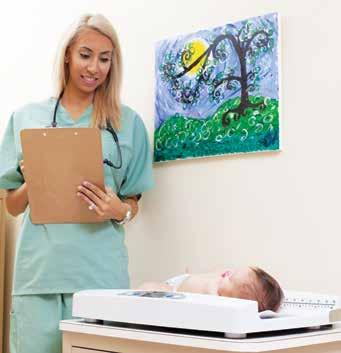
But focusing on patient experience is NOT to mini mize the technical quality of the equipment being sold, says Dr. Schwieterman. “I feel it is a mistake for reps to silo the experience and technical quality in their pitch to customers. You absolutely need both to drive optimized patient experiences. Said another way, experience scores will be capped at a suboptimal level if the technical aspects are poor. Patients are aware of technical quality when they receive care, and it is highly unlikely they will disregard it in their experiential rating.”
Says Ken Harris, “In today’s hyper-competitive mar kets, patients have many healthcare options to choose from. How a treatment facility fits a patient’s expectations will have a meaningful effect on their perceptions and, in turn, their overall experience. Working with a local rep and a manufac turer that you trust can help practices ensure the equipment they purchase is appropriate for their facility and patients’ needs. It also creates a partnership that facilitates acquiring the most reliable equipment and the support needed to keep the equipment functioning well into the future.
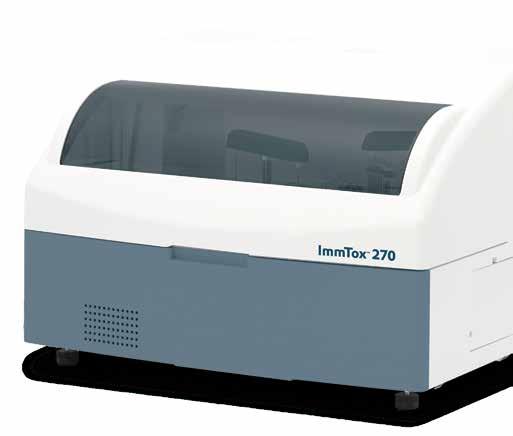


As a standard medical practice, clinicians are familiar with the sticky subject of IV catheters. This therapy has been used for over 350 years, but it certainly provides challenges for plenty of clinicians in the field. Companies like BD have taken great measures to improve the necessary tools for successful IV procedures.
In a recent podcast, host and Repertoire Magazine publisher Scott Adams spoke to Kierstin Olson, the Marketing Director of Vascular Access for BD, about IV catheters and a selection from the full range of vascular access devices that BD offers.
“Peripheral IV catheters (PIVCs) are devices that get placed in the vein to deliver fluids, medications, and other therapies such as blood products,” Olson said. “Most often, the IV access is obtained to pro vide therapies that can’t be admin istered or are less effective if given in alternate routes like a pill.” IV medication and fluids can be used to treat nausea and dehydration and are often a more effective way to give medications.
Even with a therapy that’s been used for so long, there are plenty of com plications that can occur when clini cians are putting in a catheter. One of the major areas that BD focuses on is first stick success.
Olson said, “The placement of that IV is often the first procedure that happens to a patient by a clini cian. It’s uncomfortable, of course, because it has to do with a needle. When the clinician misses, they begin to doubt their own abilities. Getting
the insertion right on the first attempt is critical.”
Studies have shown that inser tion on the first attempt was unsuc cessful in up to 26% of adult patients, 54% of pediatric patients, and 55% of neonatal patients. After multiple insertion attempts, the like lihood of a negative outcome like vessel trauma and venous depletion increases. Once the clinician has used the available body parts that can take an IV catheter, you have to perform more invasive procedures to get the patients the hydration or medications they need.
As the most important asset to hospitals and medical clinics, clini cians also have to take precautions to protecting themselves against blood exposure. “Managing blood exposure can have a very meaningful impact on healthcare system economics. For example, post exposure manage ment costs could be up to $4,000 per reported exposure. Blood exposure can also affect the emotional wellbe ing of healthcare workers. Healthcare workers experience significant anxiety after occupational exposure to poten tially contaminated body fluids.”
BD’s portfolio of vascular access devices run the gamut of IV needs
that clinicians experience daily in the clinical setting. Olson discussed three products specifically:
BD Insyte™ Autoguard™ BC
Pro Shielded IV Catheter with Blood Control Technology –Using push button needle shielding technology that instantly retracts the needle, helping to reduce accidental needlestick injuries. ʯ BD Nexiva™ closed peripheral IV catheter system – This catheter works to preserve the site for longer to ensure that the patient can continue to get scheduled medication, while lessening blood exposure to clinicians.
BD Cathena™ safety IV catheter with BD Multiguard™ technology–With an ergonomical design, this catheter uses Multiguard technology to provide a safe insertion, reducing the risk to patients and clinicians.
Olson said, “All of these catheters have what’s called BD InstaFlash™ needle technology, which is a hole or a notch in the needle that allows blood to flow in the catheter tubing imme diately upon reentry of the vessel.” When clinicians use this technology, they are achieving insertion their first attempt 85% of the time, compared to the 79% success rate of catheters without this technology.

BD Instaflash ™ Needle Technology
Blood Control Technology provides protection from blood exposure
Complete needle encapsulation
BD Vialon Catheter Material
Push-button needle shielding technology
Incorporates a notched needle, which is designed to improve first-stick success and reduce painful hit-andmiss insertions
Designed to help confirm immediate vessel entry

Compared
Compared
bd.com
BD,
Scan this code to watch a video on how to use the BD Insyte™ Autoguard™ BC Pro Shielded IV Catheter with Blood Control Technology.
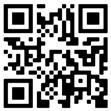
catheter in
Softens, enabling longer dwell time and reducing the chance of phlebitis up to 69%*
Clinically demonstrated to dwell up to 144 hours
BD Insyte™ Autoguard™ BC Pro Shielded IV Catheters with Blood Control Technology demonstrated a 95% reduction in the risk of blood exposure**
No need to apply venous compression during insertion
reserved. BD-68080 (08/22)
How larger technology companies could help to reshape U.S. healthcare in the coming years.
 By Dr. Robert Pearl
By Dr. Robert Pearl
Big Tech has had a surprisingly small impact on U.S. healthcare, so far.
Artificial intelligence, for example, outperforms physicians in many com plex tasks (like reading mammograms and analyzing chest X-rays), yet AI remains woefully underused. Meanwhile, many have tried to spur operational efficiency using big-data analytics, but care delivery remains as inconsistent and ineffective as ever. Perhaps the most telling example of Big Tech’s strug gles in medicine: 9 in 10 healthcare organizations still rely on fax machines to exchange important patient information.
Two tech giants are trying to change all that – and capture a mean ingful slice of the $4.1 trillion Ameri cans spend on healthcare each year.
Their approaches couldn’t be more different. One company is dutifully abiding by an old, unwritten rule of health technology. The other is poised to rewrite the healthcare rulebook altogether.
First, the rule: It’s better to collaborate (than compete) with healthcare’s power players
In most industries, technology has been used to disrupt or displace the incumbents. That’s how ride-sharing apps shook up the taxi industry, how online booking sites changed travel and how streaming platforms bested cable companies.
In healthcare, however, the saf est and most reliable path to success is different. Tech companies make a profit by (a) playing it safe and (b) playing nice with hospitals, physi cians, insurers and drug companies.
Apple: Playing it safe, playing nice and profiting handsomely Apple recently released a 59-page report it referred to as “a snapshot of our work to advance health.”
It was supposed to be a big, bold announcement, positioning Apple as a major force in healthcare.
Instead, critics called it a desper ate maneuver – a fickle attempt to convince shareholders that the com pany is keeping up with its rivals.
The media backlash was swift, severe and certainly not what CEO Tim Cook must have envisioned three years ago when he said Apple’s “greatest contribution to mankind” would be health-related (a claim that was conspicuously absent from the company’s near-60-page report.)
For all the report’s lofty lan guage, there was no evidence in it to suggest that Apple is on course to drastically improve American health.
Take the “Apple Heart Study,” which aimed to prove the Apple Watch can accurately detect atrial
fibrillation (AFib). The effort was a classic case of rule-following: Apple aligned with a prestigious academic research partner (Stanford), funded the massive research project and took a lengthy PR victory lap when the results came out.
Independent researchers were less impressed with the findings, which some called “useless” due to the study’s poor demographics, a
high dropout rate and the lack of follow-up. Critics also pointed out that mass screening for AFib might actually “do more harm than good.”
As for the watch, itself, another study found that “only 13% of people who were later diagnosed with atrial fibril lation had gotten an irregular heart rhythm notice previously.”
To be clear, the watch may some day contribute to the growing arsenal
of tech-based tools used to detect AFib and other medical conditions.

But that’s not the kind of contribu tion Tim Cook promised years ago.
What’s most frustrating about Apple’s modest dealings in health care thus far is knowing how capable the company is of doing so much more. It has the people, power and products to revolutionize health monitoring – especially for the 30%
of U.S. adults living with two or more chronic diseases (e.g., diabetes, heart failure, hypertension).
That population doesn’t a need another medical device that gener ates terabytes of health data (EKG tracings, blood-pressure readings, etc.). And that population’s already overburdened doctors definitely don’t want all that data clogging up their health records either.
What chronically ill patients need more than anything is a device that tells them one of two pieces of information:
1. You’re okay. Meaning, your measurements (heart rate, blood glucose, etc.) fall within an acceptable range that has been pre-determined by your physician.
2. You’re not okay. Something is off and you need to call your physician immediately.
This type of tech – powered by a combination of AI and algorithmic tools – could save thousands, maybe millions, of lives without overwhelm ing doctors. Apple hasn’t yet created it because doing so would make the
company a provider of medical care. Were that the case, any error in mea surement or analysis would subject Apple to significant medical-legal risk.

Tim Cook knows that playing it safe and playing nice with healthcare’s biggest players all but guarantees future profitability. But until Apple is willing to take risks and challenge the status quo, it’s unlikely to make a meaningful contribution to our nation’s health.
The same week Apple released its underwhelming report, Amazon announced the $3.9 billion acquisi tion of One Medical, a membershipbased primary care practice based
in San Francisco, New York and 23 other metro markets.
For Amazon, it was the latest in a series of big moves that con stitute anything but “playing nice” with healthcare’s existing powers. In recent years, the world’s larg est online retailer has launched its own pharmacy, its own telehealth and urgent-care services, healthtracking device, health-data arm, cloud-based medical records ser vice, and its own series of neigh borhood health centers situated near employee hubs.
As its healthcare services grow, Amazon becomes an ever-growing threat to drugmakers, hospitals, doc tors and insurers.
The company now seems intent on doing in healthcare what it did to retail: take it over.
Of course, critics are quick to point out that medicine isn’t retail. Healthcare is complicated and Amazon has already had to change course twice. First it was Haven, a nonprofit venture created for the employees of Amazon, Berkshire Hathaway and JPMorgan Chase, which disbanded after just three years. At the time, experts argued the U.S. healthcare system was just “too complex to be disrupted” by Jeff Bezos and his billionaire buddies.
I disagree. I believe Bezos’ vision for Haven (and for healthcare) was just much bigger and bolder than that of
his executive counterparts. In fact, I’ve said before that anyone who thinks Bezos’ end goal with Haven was to create a not-for-profit healthcare ser vice just for employees probably also believes that Amazon only sells books.
Amazon’s other healthcare retreat happened more recently, announcing it will unplug its virtual care opera tion later this year, likely pivoting to an expanded telemedicine service through One Medical.
For any “new” healthcare entrant, including Amazon, the hard est part is achieving scale. It’s expen sive, difficult and time-consuming to attract new patients, hire physicians and build medical offices.
With the One Medical acquisition, Amazon scooped up 188 clinics and 700,000 patients, along with enough physicians and support staff to care for them. And with $60 billion cash on hand, the company can continue to scale up quickly in years to come. Both Bezos and his successor
Andy Jassy understand that if Ama zon can satisfy patients as much as it pleases current retail customers, healthcare disruption and domi nation are within reach. And if Amazon does, in fact, take a cus tomer-service approach to health care, we can expect it will negotiate the best prices on everything from drugs to doctor visits. It’ll emphasize cost- and information-transparency, both of which are sorely lacking in healthcare today. And it might even
introduce user feedback tools (like its 1 to 5-star product reviews).
Expect Amazon to also create business synergies, as well, poten tially bundling Prime membership with enrollment in One Medical and/or leveraging Amazon Web Ser vices to bring telehealth and patient data into the 21st century.

Still, for Amazon to succeed, it will need to keep investing in growth and scale.
One or two million Amazon patients won’t cut it. After all, United Healthcare Group has 70 million mem bers while Humana, the smallest of the “Big 5” insurers, boasts 16 million.
At 5 million members, Ama zon could turn One Medical from a loss leader (currently bleeding $240 million per year) into a profit center. At 10 million members, Amazon could add specialists to One Medical’s current primarycare-only model to bolster both care coordination and operational efficiency. At 50 million members, Amazon could become the nation’s No. 1 insurer and healthcare system, capable of demanding lower costs from every player, including doc tors, hospitals and drug makers.
In the end, if Amazon can scale up and make healthcare as easy as its beloved one-click “buy now” feature, the company will put every existing industry player on its heels. And it will leave its Big Tech rivals, including Apple, in the dust.
‘Before behavioral health integration, we might refer a family to a mental health agency, but we didn’t know who they were going to see, and we could only hope they would be matched with someone with expertise with the age group.’

Up to 70% of all primary care visits include a behavioral health component. Why not put the two together?
Accessing behavioral health services in the United States is becoming increasingly difficult even as the need for such services keeps growing. Some healthcare decision-makers believe that primary care practices can help fill that void. But can they shoulder the task, given the staffing and reimbursement challenges of behavioral health?
“Integrating behavioral health with primary care aims to increase access as well as reduce the stigma associated with seeking mental health treatment,” says Sterling Ransone, M.D., FAAFP, president of the American Academy of Family Physicians. “Without a system in place to routinely screen for behavioral health conditions and substance use disorder in the primary care setting, we will miss opportunities to address problems that threaten the health and well-being of our patients, families and communities.”
Fifteen to twenty percent of adults in the United States report diagnoses of depression or men tal illness, and 10% to 15% report suffering severe psychological dis tress in the past year, according to a recent report from the Robert Gra ham Center for Policy Studies in Family Medicine and Primary Care, a Washington, D.C.-based clinical research group.

COVID-19 exacerbated the situ ation. Data from the U.S. Govern ment Accountability Office shows that the pandemic increased social isolation and stress, and contrib uted to higher rates of anxiety and depression symptoms and increased
substance use in the U.S. Yet fewer than 50% of those with a mental ill ness reported receiving care in the past year.
The close relationship between phys ical and mental health is an oft-cited rationale for integrating behavioral health and primary care. Up to 70% of all primary care visits include a behavioral health component, write leaders of the Behavioral Health Integration (BHI) Collaborative in a recent issue of “Health Affairs.”
Founded in October 2021, the BHI Collaborative is led by several physi cian organizations and is intended to
support physicians working to com bine mental and physical health in their practices.
Behavioral health conditions are a leading contributor to dis ease burden in the United States, with depressive and substance use disorders among the top 10 causes of death and disability among adults. They are also a leading cause of pre ventable pregnancy-related deaths. Individuals with co-occurring phys ical and behavioral health condi tions also tend to incur higher healthcare costs and experience worse health outcomes.
Undiagnosed and untreated behavioral health conditions often have physical manifestations, accord ing to the Robert Graham Center. Patients with chronic diseases whose mental health conditions are left undi agnosed or untreated often experience poor management of these chronic diseases and worse clinical outcomes.
“Behavioral health is more than just mental health,” says Yalda Jab barpour, M.D., director of the Rob ert Graham Center. “It also means identifying the behaviors or thoughts that lead patients to poor health deci sions. An example is a patient who just had a heart attack but continues to smoke and eat poorly. Behavioral health clinicians can help address the habits or underlying thought pro cesses that lead someone to do this.
“But also, when patients have uncontrolled mental health issues such as depression or anxiety, their abil ity to care for their chronic diseases is diminished,” she says. “A patient with uncontrolled major depressive disorder will have disordered sleep, disordered eating habits, lack of moti vation to do things that used to bring them pleasure, and lack of motivation to leave the house for doctor visits or to take their medications.”
Today, 118,500 primary care phy sicians are co-located with nearly 140,000 behavioral health clinicians in 23,000 primary care practices (20% of primary care physicians, 19% of behavioral health clinicians, 38% of primary care practices), according to the Robert Graham Center.

“If co-location means actual integration, this is a great start,” says Dr. Jabbarpour. “But a couple cave ats. Just because a primary care phy sician and behavioral health clinician are co-located does not mean they are on the same floor or in the same office. Even if they were, it does not necessarily mean that they work hand-in-hand. Also, the distribution of these providers may not be equal. There may be areas of high behav ioral health need that lack integrated behavioral health practices, and areas with lower need that have more than one BHI practice. BHI is growing but I would not say supply is suffi cient to meet the demand.”
Behavioral health integration offers convenience for the patient and fam ily, efficiency in consultation, better communication, treatment adher ence, co-management, family buy-in and reduction of stigma, says Mar ian Earls, M.D., MTS, FAAP, chair of the American Academy of Pediat rics Council on Healthy Mental and
Emotional Development and chair of the AAP Mental Health Leadership Group, which is focused on mental health integration in pediatric practice.
“In addition, it eliminates the knee-jerk reaction of immediately referring for concerns. The wait times for a referral can be significant. Even if a referral is made, primary care intervention ... and follow-up can begin immediately.”
Routine screening optimizes prevention and early identification, she says. “Every child should have a social/emotional screen, appropriate for age, at each of their well visits. Regardless of result, the screen is discussed with the family. If it shows concerns, engaging the patient and family in secondary screening and planning, providing diagnostic evalu ation (or referring for evaluation), management, co-management with a mental health specialist if indicated, and regular follow-up would occur.”
Successful integration of behavioral health care can occur along a spec trum, from coordinated to fully inte grated care, with the Collaborative

‘Before behavioral health integration, we might refer a family to a mental health agency, but we didn’t know who they were going to see, and we could only hope they would be matched with someone with expertise with the age group.’

With the same great protec tion you get from a Wolf barrier, this model features the ability to position the clear lead at any level between 45.25” and 74” for the ultimate in patient and operational visibility I t ’s great for dozens of applications.
Best of all, the internal counter balance mechanism makes it easy to lif t or lower…it requires minimal

• O verall width: 30.5”
• Opaque por tion of the shield has .8mm lead equivalent protec tion
• Clear panel provides .5mm lead equivalent protec tion


• 25” legs with casters provide strength, durability and easy transpor t within the clinic

• The per fec t right size solution for any environment: OR, ER, C T, X ray, Urology, Pain Management, and Surgical Centers
• When lowered allows rapid transpor t to any location in hospital or clinic and easy to -store

Care Model (CoCM) being one of the models.
In the Collaborative Care Model, a care manager coordinates care of the patients with significant mental health concerns which call for the consultation of a psychiatrist, says Dr. Earls. This model requires that the practice maintain a contract with a psychiatrist and a registry of such patients. The care manager com municates with the psychiatrist and shares recommendations with the primary care provider.
“But this model has limited use in pediatrics,” she says. “Most men tal healthcare in the pediatric setting involves children and adolescents with functional issues or concerns that don’t rise to the level of a DSM-5 diagnosis,” that is, a standard classification of mental health dis orders. “For those who do have a DSM-5 diagnosis, the needs are pri marily mild to moderate. In addition, the significantly limited number of child and adolescent psychiatrists makes wide availability for contract ing with practices unlikely.
A second model – the Primary Care Behavioral Health Model – is more consistent with pediatric practices, say Dr. Earls. In this model the men tal health clinician is a member of the family-centered medical home team and:
ʯ Participates in morning “huddles.”
ʯ Partners during routine visits and provides immediate triage and response to positive screens.
ʯ Gets involved routinely in visits for children with chronic/com plex conditions.
ʯ Provides self-management coun seling for patients with chronic medical conditions.
ʯ Engages in “warm handoffs,” that is, handoffs conducted in person
between the medical and behav ioral health team, often in front of the child and family.
ʯ Provides liaison with the mental health specialty system, schools, and agencies.
ʯ Monitors the child’s/adolescent’s course.
Behavioral health integration ben efits doctors and staff as well as patients and their families, according to adherents.
Integrating a mental health professional in pediatric practice provides cross-fertilization, or bidirectional learning between primary care clinicians and mental health clinicians, says Dr. Earls. “Primary care clinicians become more com fortable interpreting screening, hav ing conversations with patients and families, providing follow-up and understanding community resources. Meanwhile, mental health clinicians become more knowledgeable about routine preventive care, develop ment and the mental health needs associated with chronic conditions.
North Carolina, which primarily served kids from families living under 200% of the federal pov erty level. “We knew if we just put a mental health clinician down the hall and referred kids, their sched ule would fill up quickly, limiting capacity. So we didn’t want a tradi tional model,” she says.
“Our practice had a fairly large percentage of children and adoles cents with chronic medical condi tions. One example would be those with sickle cell disease – a main stressor. They may miss school because of pain, and their parents might miss work to take care of them. Add to that the stress of hos pitalization.” Pediatric practices deal with a host of other issues, such as the adolescent with type 2 diabe tes who has decided to stop taking meds, or children with severe asthma or developmental issues.
“Before behavioral health inte gration, we might refer a family to a mental health agency, but we didn’t know who they were going to see, and we could only hope they would be matched with someone with
“When we first decided to do this, people knew we needed help but didn’t know the model,” says Dr. Earls, speaking of her experi ence with behavioral health inte gration dating back 20 years. At the time, she was medical director of Guilford Child Health (now Triad Adult & Pediatric Medicine), a nonprofit practice in Greensboro,
expertise with the age group,” says Dr. Earls. “That was especially dif ficult because at the time, a lot of public mental health work was done predominantly with adults, often with significant issues. Kids and their parents can feel very uncom fortable in a waiting room full of adults with diagnosed mental health issues. And later we might find out
‘When patients have uncontrolled mental health issues such as depression or anxiety, their ability to care for their chronic diseases is diminished.’
they never got to a mental health clinic at all, or they weren’t satisfied with the care they received.
“With an integrated mental health clinician, we were better able to make a ‘warm handoff’ to a community mental health clinician for treatment when indicated, and to co-manage.”
The Primary Care Behavioral Health Model was a good fit for Guilford. Soon clinicians were clear that they would not want to practice any other way again, she says.
Primary care practices often find that reimbursement for behavioral health is inadequate.

“When a clinician has a visit with a patient, they get paid,” says Dr. Jabbarpour. “This leaves out non-billing members of a healthcare team who are essential to behav ioral health, like social workers and therapists. Additionally, if a clinician wants to collaborate with a billing behavioral health provider, such as a psychiatrist, they don’t get paid suf ficiently for that time.
“In order for these practices to stay viable and serve patients in their communities, we need payment reform that moves us towards pay ing for teams to deliver care and not clinicians to deliver services.”
The BHI Collaborative points out other obstacles that primary care practices face when trying to imple ment behavioral health integration:
ʯ Lack of necessary upfront capital, including required training and resources.
ʯ Complex and burdensome billing requirements, particularly in fee-for-service situations and narrow/carveout networks.
ʯ Out-of-pocket patient costs asso ciated with integrated services,
which can deter patients from seeking such support.
ʯ Difficulty estimating the net effects of behavioral health integration. “Without a convincingly calculated return on investment, it is challeng ing for physicians to confidently invest in resources to sustain BHI efforts in their practices,” according to the Collaborative.
ʯ Federal and state regulations that make it difficult for practices to share patient information across care team members.
ʯ Difficulty finding and retaining a workforce trained in integrated care.
“More people than ever are struggling with their behavioral health, including both mental health and substance use disorders,” write the authors from the BHI Collabora tive. “By working collaboratively to address both physical and behavioral patient concerns in primary care, we can begin to properly use BHI to enable holistic health care for all.”
Says Dr. Jabbarpour, “Just as there is a shortage and maldistribu tion of primary care, there is a short age and maldistribution of behavioral health providers. Both workforces need to be bolstered to meet the demands of the population.”
Consumer-driven trends, value-based strategies and better physician relationships encourage transition to ASCs.
By Daniel BeairdThe healthcare sector has significantly consolidated in recent years. Large health systems have acquired smaller hospitals and the remaining hospitals have amassed existing outpatient facilities like urgent care, imaging locations and independent physician practices as outpatient care has become more popular. This has limited inpatient days and lowered hospital revenues, all while the healthcare sector tackles higher overhead and labor costs.
The preference for outpatient care is set to continue. Healthcare staffs are encouraged to expand their abilities for a variety of alternative care sites and reimbursement mod els are being restructured to meet the shift toward outpatient services.

CMS implemented the Outpatient Prospective Patient System (OPPS)
rule in 2019, extending a site-neutral payment policy to off-campus pro vider-based departments (PBDs). It reduced off-campus PBD payments to 70% of the full OPPS rate.
The OPPS rule was ruled to be invalid by a federal judge that same year, but the U.S. District Court of Appeals for the D.C. Circuit over turned the court’s ruling in 2020.
The American Hospital Association
(AHA) and the Association of American Medical Colleges (AAMC) are opponents of the site-neutral payment policy, but the U.S. Supreme Court declined to hear AHA’s appeal of the U.S. District Court of Appeals decision in 2021.
Melinda Hatton, general counsel for the AHA, said in a statement at the time, “America’s hospitals and health systems are disappointed in



this decision because it will cause seri ous harm to their ability to provide care for patients. It fails to account for the fundamental differences between hospital outpatient depart ments and other sites of care. Hos pitals are open 24/7, held to higher regulatory standards and are often the only point of access for patients with the most severe chronic condi tions, all of whom receive treatment regardless of ability to pay.”
offices providing the same services. CMS began reprocessing claims for outpatient clinic visit services at excepted off-campus PBDs in 2021 so that they were paid the same rate as non-excepted off-campus PBDs for those services under the physi cian fee schedule. It affected certain claims with dates of service between Jan. 1-Dec. 31, 2019.1
In American Hospital Associa tion v. Becerra (2022), the AHA and
“It comes as no surprise to see that hospital systems are pursuing a variety of ASC initiatives, often in partnership with physicians, that will allow them to broaden their surgery center and outpatient portfolios. As surgical care continues its migration out of the inpatient setting, hospital systems are recognizing the need for at least one ASC, and increasingly multiple centers, in their portfolios.”
procedures into the outpatient set ting have all had an effect on hos pitals investing in ASCs. Accord ing to a national survey conducted by Avanza Healthcare Strategies of senior executives and clinical lead ers at hospitals and health systems across the country, more than six in 10 hospitals and health systems intend to increase their investments in ASCs.
Hospitals are becoming less reli ant on third-party management ven dors for their ASCs and more willing to partner and share ownership with physicians in joint venture ASCs. Half of the respondents in Avanza’s survey indicated current ownership of multiple ASCs in their portfolios.
But the Medicare Payment Advi sory Commission (MedPAC) said the biggest driver for physician and hospital consolidation was that Medicare paid hospital-based clinics a higher price for the same services than it did physicians’ offices, and if CMS adopted site-neutral payments between hospital and physician offices, it would reduce the incentive for those mergers.
CMS has stated that it would have saved an estimated $800 million in payments to outpatient departments during 2020 under the 2019 rule. The rule aims to remove payment dispari ties between clinics affiliated with hospitals that receive more Medi care reimbursement than physicians’
several hospital associations and hospitals sued HHS, alleging that it exceeded its statutory authority in the rule reducing reimbursement rates for certain hospitals, specifi cally 340B hospitals and Medicare Part B insured patients. In June 2022, the U.S. Supreme Court unanimously ruled that the statute does not give HHS the authority or the discretion to vary the reimbursement rates for 340B hospitals.2
The movement toward value-based care, growing competition for phy sicians and surgical cases, and the ongoing shift of non-urgent surgical
“It comes as no surprise to see that hospital systems are pursuing a variety of ASC initiatives, often in partnership with physicians, that will allow them to broaden their surgery center and outpatient portfolios,” said Joan Dentler, founder and pres ident of Avanza. “As surgical care continues its migration out of the inpatient setting, hospital systems are recognizing the need for at least one ASC, and increasingly multiple centers, in their portfolios.”
The maturity of the ASC indus try is cited as a reason for more growth in the category. Dentler says that management services were often a necessity to running a viable sur gery center in the early days of ASCs. But the proliferation of support ser vices and technologies for the indus try and the growth of professionals with ASC experience has neutralized the need to give up valuable equity and enter expensive management agreements for ASC success.
More than 80% of hospital sys tems surveyed by Avanza have one or more of their ASCs as joint ven tures with physicians, and more than
– Joan Dentler, founder and president of Avanza
half are allowing employed physi cians to invest in their ASCs. Thirdparty management and partnerships continue to decline.3
Not only have consumer-driven and payer-driven trends from the past several years solidified the need for ASCs, but the COVID-19 pandemic also stiffened the competitive posi tions of ASCs as the preferred setting for high-quality, low-cost surgical care.
According to the Avanza survey, from 2020 to 2021, the percentage of ASCs with 100% hospital and health system ownership declined from 25% to 12%. Yet majority own ership by hospitals and health sys tems in ASCs increased from 54% to 58% during that same period.
The takeaways included hospitals and health systems potentially being more amenable to sharing owner ship with physicians since physician financial investment in the ASC may serve to motivate physicians to be

more cost-conscious, helping drive profitability. Also, physicians are interested in joint ventures as minor ity owners due to contracts that can be leveraged with payers and GPOs that are accessible only if the hospi tal is the majority owner.
Hospitals, on the other hand, are owning or affiliating with ASCs due to four primary reasons: ʯ Responding to consumerdriven trends. ʯ Preventing physicians from taking cases outside the hospital and health system. ʯ Supporting a value-based strategy. ʯ Enhancing physician relationships.
And 63% of hospitals surveyed planned to increase ASC investments or affiliations. At the same time, third-party management is declining. In 2019, 23% of hospitals and health systems with ASCs had a third-party manager. That declined to 15% in 2021. The survey also found the percentage of hospitals and health
systems with ASCs that permit thirdparty equity partners has declined from 44% in 2018 to 27% in 2021.
One of the fastest growing areas of freestanding ASC development is hospital-based outpatient departments (HOPDs) conversions. These depart ments acted like freestanding ASCs but operated as arms of the hospital, collecting hospital reimbursement.
Medicare per-payment proce dures were significantly higher for HOPDs than payments to ASCs,4 and the reduction in revenue for hos pitals when converting HOPDs to ASCs has come with consternation, but it’s a step toward value-based care. According to Avanza, in 2021, 53% of hospitals and health systems with HOPDs that mimic ASCs were considering converting one or more of their HOPDs to ASCs.
Shifting outpatient procedures to ASCs reduces spending for com mercially insured individuals by almost 60% and saves consumers close to $700 per procedure.5 Over 6 million routine outpatient proce dures are performed in HOPDs, but only 10% of those procedures are for complex patients like those with morbid obesity or those suf fering from end stage renal disease, and 35% of those procedures are for patients who do not have an ASC close to their residences.
The ASC market size in the U.S. is estimated to reach almost $60 bil lion by 2028,6 up from $34 billion in 2020 and $36 billion in 2021.
Why it’s crucial to differentiate between COVID-19, flu, and RSV
Due to the ongoing need to differentiate between flu, RSV, and COVID-19, there is a significant emphasis on diagnostic testing in laboratory medicine. “While many of the signs and symptoms of infections caused by these viruses are similar, the treatments and patient interventions for infections caused by SARS-CoV-2, influenza virus, and RSV are different,” said Michael Loeffelholz, Ph.D., Senior Director, Medical Affairs for Sunnyvale, Calif.-based Cepheid, a molecular diagnostics company. “Infected, hospitalized patients are often cohorted, and even in the urgent care and physician office settings, antiviral agents are often prescribed for influenza infections, making accurate diagnosis important,” Dr. Loeffelholz said.

• Multiple pathogens causing similar symptoms are circulating at the same time and need to be tested simultaneously to obtain an accurate diagnosis


• Get accurate detection and differentiation of SARS-CoV-2, Flu A, Flu B, and RSV in 36 minutes or SARS-CoV-2 positive results in as soon as 25 minutes ^


• Actionable results from a single sample with less than one minute of hands-on time and easy-to-use workflow; enabling effective management of limited resources
* These products have not been FDA cleared or approved, but have been authorized by FDA under an EUA for use by authorized laboratories; Xpert Xpress CoV-2 plus has been authorized only for the detection of nucleic acid from SARS-CoV-2, not for any other viruses or pathogens; Xpert Xpress CoV-2/Flu/RSV plus has been authorized only for the simultaneous qualitative detection and differentiation of nucleic acids from SARS-CoV-2, influenza A, influenza B, and respiratory syncytial virus (RSV), and not for any other viruses or pathogens. The emergency use of these products is only authorized for the duration of the declaration that circumstances exist justifying the authorization of emergency use of in vitro diagnostics for detection and/or diagnosis of COVID-19 under Section 564(b)(1) of the Federal Food, Drug and Cosmetic Act, 21 U.S.C. § 360bbb-3(b)(1), unless the declaration is terminated or authorization is revoked sooner.
^ Full test runtime is 36 minutes. SARS-CoV-2 positive results available in as soon as 25 minutes with early assay termination.
- https://www.cdc.gov/flu/symptoms/symptoms.htm
 COVID-19
COVID-19
Cepheid has responded by developing fast and accurate tests for SARS-CoV-2, including the Xpert® Xpress CoV-2/Flu/RSV plus (4-plex plus) test that detects SARSCoV-2, Influenza A, Influenza B, and Respiratory syncytial virus (RSV) all in a single test. Studies have shown Cepheid’s SARS-CoV-2 tests to be among the most accurate available. 1,2 Cepheid’s test systems are scalable from the point of care to the high volume core laboratory. Importantly, the same Cepheid SARS-CoV-2 test can be used at both point of care and in the core laboratory, providing nearpatient testing accuracy equivalent to that of large batch-based platforms.3
Cepheid’s 4-plex test has been shown to provide high accuracy, equivalent to that of Cepheid tests that sepa rately detect SARS-CoV-2, Flu and RSV.4,5 Cepheid’s 4-plex plus test is the latest generation and exempli fies Cepheid’s proactive approach to address increasing genetic diversity of SARS-CoV-2.
“The 4-plex plus will improve operational efficiencies by combining four important viral targets in a single test,” Dr. Loeffelholz said. “This means fewer patient specimens to collect and laboratory tests to perform, compared to separate tests for these viruses.”
SARS-CoV-2, influenza viruses, and RSV cause upper and lower
respiratory tract diseases that have many overlapping signs and symp toms.6 These viruses each have unique treatment or patient man agement pathways. These factors demonstrate the value of multi plexing SARS-CoV-2, influenza A, influenza B, and RSV in a single test.
to detect both current and future emerging strains of SARS-CoV-2 and influenza viruses.
Indeed, Cepheid’s 4-plex plus test is fast, accurate, and scalable from the point of care to the high-volume core laboratory. The point-of-care and laboratory test systems use the
Among other enhancements, Cepheid’s 4-plex plus test adds a third genetic target for SARS-CoV-2. Detection of any of the nucleocapsid, envelope, or RNA-dependent RNA polymerase gene targets will produce a positive result for SARS-CoV-2. Cepheid’s 4-plex plus test includes three genetic targets for SARS-CoV-2 for broad coverage of lineages and variants, including the Delta Variant of Concern, and to mitigate future genetic drift. Additionally, the test incorporates multiple genetic tar gets for influenza viruses. As such, the 4-plex plus test is well positioned
same reagents, providing point-ofcare test performance equivalent to that observed in the reference labo ratory. Incorporation of multiple genetic targets for SARS-CoV-2 and influenza allows broad strain, vari ant, and subtype coverage, and make Cepheid’s 4-plex plus an excellent long-term solution for detection of these important respiratory viruses. SARS-CoV-2, influenza viruses, and RSV may co-circulate in the com munity. Additionally, signs and symp toms of infections caused by these viruses can be similar, making accu rate laboratory diagnosis important.
1 Zhen W, Smith E, Manji R, Schron D, Berry GJ. Clinical Evaluation of Three Sample-to-Answer Platforms for Detection of SARS-CoV-2. J Clin Microbiol. 2020 Jul 23;58(8).
2 Wolters F, van de Bovenkamp J, van den Bosch B, van den Brink S, Broeders M, Chung NH, et al. Multi-center evaluation of cepheid xpert® xpress SARS-CoV-2 point-of-care test during the SARS-CoV-2 pandemic. J Clin Virol. 2020 Jul;128:104426.
3 Stevens B, Hogan CA, Sahoo MK, Huang C, Garamani N, Zehnder J, et al. Comparison of a Point-of-Care Assay and a High-Complexity Assay for Detection of SARS-CoV-2 RNA. J Appl Lab Med. 2020 Nov 1;5(6):1307–1312.
4 Leung EC-M, Chow VC-Y, Lee MK-P, Tang KP-S, Li DK-C, Lai RW-M. Evaluation of the Xpert Xpress SARS-CoV-2/Flu/RSV Assay for Simultaneous Detection of SARS-CoV-2, Influenza A and B Viruses, and Respiratory Syncytial Virus in Nasopharyngeal Specimens. J Clin Microbiol. 2021 Mar 19;59(4).
5 Mostafa HH, Carroll KC, Hicken R, Berry GJ, Manji R, Smith E, et al. Multicenter Evaluation of the Cepheid Xpert Xpress SARS-CoV-2/Flu/RSV Test. J Clin Microbiol. 2021 Feb 18;59(3).
6 www.cdc.gov/flu/symptoms/flu-vs-covid19.htm?web=1&wdLOR=c5625922F-B970-4971-8702-F16D97311251
www.repertoiremag.com
“The 4-plex plus will improve operational efficiencies by combining four important viral targets in a single test. This means fewer patient specimens to collect and laboratory tests to perform, compared to separate tests for these viruses.”
– Michael Loeffelholz, Ph.D., Senior Director, Medical Affairs for Sunnyvale, Calif.-based Cepheid

In the wake of the COVID-19 pandemic, federal regulators are placing more scrutiny on the medical supply chain. HIDA closely monitors federal agencies to keep our members informed of regulatory changes that may impact them. Among the hundreds of regulatory changes currently being considered by the Biden administration, we have identified three key trends that are important for the health distribution industry.
Domestic Manufacturing: The Centers for Medicare & Medicaid Services (CMS) are con sidering a regulation to increase Medicare pay ment adjustments for hospitals that purchase domestically manufactured surgical N95 res pirators. This is an important step in creating commercial market support to sustain domes tic production. The policy proposal also recognizes the substantial resources required to acquire domestically made NIOSH-approved surgical N95 respirators. HIDA supports diver sified sourcing, which is essential for future preparedness efforts and supply chain resil iency. Medicare reimbursement policy can be an effective tool to incentivize domestic purchasing by providers and is critical to long term viability.
Device Sterilization: The Environmental Protection Agency (EPA) recently announced it would scrutinize commercial plants using the gas ethylene oxide (EtO) to perform ster ilization of medical devices and other prod ucts. The EPA has identified commercial sterilizers in 13 states and Puerto Rico that regulators determined could contribute to long-term health impacts for people living in nearby communities if exposed to a lifetime of EtO emissions at the current levels. These commercial sterilizers are used by the medi cal products distribution industry. According
to the Food and Drug Administration, EtO is currently used to treat approximately 50% of sterile medical devices, about 20 billion medical devices annually. For some devices, EtO is the only safe and effective sterilization method currently available.
Social Determinants: In one of his first acts as president, Joe Biden signed an executive order directing federal agencies to advance racial equity in all sectors of the govern ment, including healthcare. One effort to maintain equity in healthcare outcomes is by focusing on social determinants of health (SDOH). The federal government defines SDOH as the conditions in places where people live, learn, work, and play that affect a wide range of health and quality-of liferisks and outcomes.
With political changes expected to come to Congress next year, the Biden administra tion will likely exercise more power through the process of executive orders and agency directives – the so-called “pen and phone” strategy of presidential power. CMS has been collecting comments from stakeholders on how to measure SDOH through the annual Medicare payment regulatory process. These regulatory analyses are available to our mem bers on our website at HIDA.org.
Incorporating new and innovative ideas into content marketing keeps your campaigns from growing stagnant or blending in with other similar brands. There are a few brands that nailed down content creation in 2022. Learn tips from some of the best content programs and how to incorporate similar ideas into your healthcare content marketing.
itineraries, suggestions for places to eat, and city guides.
Ritz-Carlton shows the power of selling benefits rather than prod ucts. They understand that travelers primarily book their hotels for the des tination. They focus on the consum er’s intent by promoting destinations where they have hotels while simul taneously positioning themselves as an authority in travel.
BMW has always had some of the best content examples filmed with highend cameras and special effects that reflect the luxury and power of BMW automobiles. This year it introduced a unique campaign entitled “WE ARE M.” It celebrated the 50th anniversary of its BMW M by bringing together several models from over the years in a stunning video that celebrates the brand’s journey and encourages a feeling of community.

You can use your anniversaries and business successes to market your brand. Allowing your customers and new clients to celebrate with you builds
a sense of community around your brand and makes them eager to see what you will do next. In addition, it’s a testament to your success, which will attract new customers to your business.
The Ritz-Carlton is a luxury hotel company that offers lodging around the world in some of the most desirable locations. Its content mar keting campaign, Journey into the Ritz-Carlton, shifts the focus away from the hotel to the destination. Visitors receive an immersive travel experience through their browser or app as they dive into the world’s more beautiful locations. They can also access resources like travel
GE uses social media to promote its brand in a visually appealing way. Its images and videos take the com pany’s followers behind the scenes to explore some of its most breathtak ing innovations. The images draw the followers in, while its comments tell stories about who the brand is and how it helps others.
Social media isn’t just for B2C brands. B2B brands can also use social media to tell stories and reach new custom ers. GE’s posts also show the power of storytelling. While their company is huge, they make it more personal by telling stories of individual products that help specific companies.
marketing products and solutions, visit sharemovingmedia.com

Whether it’s finding product solutions for healthcare providers or competing in endurance races, Cardinal Health’s Tyler Rorrer is always looking to see how far he can push himself toward success.
 By Pete Mercer
By Pete Mercer
For Tyler Rorrer, one of the best aspects of his job is the dynamic nature of the healthcare supply chain. Each day brings a new challenge that requires a different strategy, constantly keeping him on his toes.
He said, “The beauty of this role is that no two days are the same. One day I might be meeting with a director of nursing to discuss how single-patient-use lead wires could help reduce the risk of cross-contamination for their health system and the next day I might be leading a feeding tube placement.”
Rorrer is a specialty products representative with Cardinal Health in Jacksonville, Florida, serving as the product specialist for nutritional delivery, cardiology and sequential compression solutions. Part of this role allows him to assist clinical staff with procedures involving Cardinal Health’s IRIS feeding tubes, which gives the clinician’s direct visualiza tion through an integrated camera to help place the feeding tube.
Essentially, Rorrer is working to streamline the healthcare procedures and processes for clinicians, while improving the outcomes for their patients. The feeding tube is simply one example of the kind of collabo ration he gets to participate in every day, whether it’s with the hospital C-Suite, VAC, physicians, supply chain, and other key decision makers.
So far, he’s enjoyed incredible success at Cardinal Health. Rorrer earned back-to-back President’s Club Awards in fiscal year 2019 and 2020 with the Ambulatory Surgery Center sales organiza tion. In 2022, he transitioned to Cardinal Health’s Specialty Sales
team, where he continues to drive success within the North Florida and Southeast Georgia territories.
In addition to pursuing excellence in his professional career, Rorrer is also an avid endurance athlete. Growing up, he played competitive sports, where he was constantly pushed to be better. His soccer team regularly went to the biggest tournaments, where they either came in second place, or won the tournament alto gether. There was even a period where Rorrer’s team didn’t lose a sin gle game for over a year and a half.
He said, “Ultimately, I think those experiences growing up allowed me to establish a desire to achieve and it’s translated over into my career and personal life. I also have an insatiable desire to be the best possible ver sion of myself. I get excited thinking about the possibility of what could be and what’s next.”
In the last 12 months, he com pleted his first half-Ironman and full marathon, and he regularly runs 50 to 60 miles each week, while still making time to go to the gym at least four times a week.


“My dad was very into running and from time to time he would take me along as a training partner,” Rorrer said. “We would do local 5k races with him, which is probably where my journey with endurance sports started.”
After registering for his first half marathon in 2020, he fell in love with charting his progress and see ing how far he could push himself. “That year, I beat my goal time of 1:35 and in 2022 I beat my goal time of 1:27 for the half marathon. I love setting stretch goals and seeing what my body and mind can achieve. It’s been awesome to see all the progress
I’ve made the past few years, and I’m excited for the lofty goals I will achieve in the future.” His next goal is to qualify for the Boston Mara thon, which is something that only 4.3% of annual marathon finishers get to participate in.
This drive to be his best self is part of what makes Tyler so successful at Cardinal Health. From his years of playing competitive sports, cou pled with his time doing endurance sports, he’s learned several key les sons that he has carried into his pro fessional development:
Success happens when prepara tion meets opportunity. You fall to the level of your preparation.
You’re either preparing to win or preparing to fail.
Consistency is key. Putting in the work will pay dividends in the long run.
You need to be able to adapt. What’s worked in the past might not work today.
Another huge factor in his success stems from working with the Florida State University Sales Team and Pat Pallentino, the former director of the

Sales Institute at Florida State Uni versity. During his time at Florida State University, Rorrer competed with the Florida State Sales Team in role play competitions, working with established individuals within the sales profession.
Rorrer said that working with this team allowed him to “establish a great foundation and principles of what the sales profession should look like.” He learned from some of the best sales leaders in the business and adapted those teachings into his sales approach.
Earlier this year, Rorrer went on a mission trip to Masaka, Uganda, with his church to partner with Okoa Refuge. “The Okoa Refuge has been


around since 2012, and they’ve been able to establish phenomenal rela tionships throughout the communi ties. Due to the connections, we were able to serve in several areas around the communities. My favorite day was when we ran a medical clinic for a village in Uganda.”
Rorrer said that in some cases people walked over 10 miles to receive medical treatment for a wide variety of issues they were experi encing. “They would see our team of physicians and get the medicine they needed to help with their current ail ments. While they were waiting for their medication, we were able to speak with these individuals, learn about them, and share the gospel.”
In addition to the medical clinic, Rorrer and his team constructed a
mud home for a man who did not have the funds to build a new place to live. They were also able to assist with childcare at the Okoa orphan age and build a church in the community where they set up the medical clinic.
Mission trips to places like Uganda, Haiti, Costa Rica, and Nicaragua give Rorrer a better perspective on the many blessings in his life. He said, “Overall, it’s great to go these third-world coun tries and gain perspective of how fortunate we are. After this trip, I created a gratitude list with one thing for every year I’ve been alive. We take so much for granted, and when I’m feeling down, I turn to my gratitude list to reflect on how fortunate I am.”

Chronic, constant stress can increase lifetime risk of heart disease and stroke, but a new survey from the American Heart Association reveals regular mealtime with oth ers could be a simple solution to help manage stress.
Of the 1,000 U.S. adults nation wide surveyed in September 2022 for the American Heart Associa tion’s Healthy for Good movement by Wakefield Research, the vast majority (84%) say they wish they could share a meal more often with loved ones, and nearly all parents report lower levels of stress among their family when they regularly connect over a meal.
To make mealtime togetherness a little easier and help people claim the heart, mind and body benefits that go with it, the American Heart Association will share practical and budget-friendly meal tips each Tues day through December. People can follow #TogetherTuesday on social media or text 2gether to 51555 to get tips sent directly to their phone.
“Sharing meals with others is a great way to reduces stress, boost self-esteem and improve social con nection, particularly for kids,” said Erin Michos, M.D, M.H.S, American Heart Association volunteer, associ ate director of preventive cardiology at Johns Hopkins and a co-author of the American Heart Association’s statement on Psychological Health, Well-being, and the Mind-HeartBody Connection. “Chronic, constant stress can also increase your lifetime risk of heart disease and stroke, so it is important for people to find ways
to reduce and manage stress as much as possible, as soon as possible.“
Connecting with friends, family, coworkers and neighbors benefits people beyond stress relief. In fact, the survey found 67% of people say sharing a meal remind them of the importance of connecting with other people, and 54% say it reminds them to slow down and take a break.

The American Diabetes Associa tion® (ADA) recently announced a collaborative Oral Health campaign with Pacific Dental Services® (PDS), one of the country’s leading dental support organizations. The cam paign aims to increase awareness of the link between periodontal dis ease (gum disease) and diabetes and how oral health providers can assist patients in preventing and managing this chronic health condition.
Over 37 million Americans live with diabetes today, and 1 in 5 people don’t know they have it. Diabetes
can affect every part of the body, including the mouth. In fact, oral health issues are sometimes the first sign that a person has diabetes or prediabetes.
Dental care is an important part of a diabetes management plan, as there is a two-way link between oral health and diabetes – meaning that high blood glucose (blood sugar) affects oral health, while gum disease affects how well you can manage your blood glucose levels.
Having diabetes can increase the amount of glucose in your saliva, and it can cause your mouth to pro duce less saliva, which lessens your mouth’s ability to wash away food particles and keep the area moist. Both can lead to an increased risk of developing gum disease. And if you already have gum disease, your gums can become inflamed. Studies show that inflammation in the body can increase blood glucose levels, thus increasing your risk of developing diabetes or, if you have it, making it harder to manage.
Chances are you spend a lot of time in your car. Here’s something that might help you appreciate your home-away-from-home a little more.

If you have a Kia or Hyundai vehicle, you may want to take extra precau tions. CNBC reported that a chal lenge on TikTok and other social media platforms has car owners and police departments on alert across the country, daring young teens to steal certain cars off the street using a USB cord. Certain makes and
models of 2010-2021 Kia and Hyundai vehicles that use a mechan ical key, not a key fob and pushbutton to start the car, are particu larly vulnerable. Investigators told CNBC the trend started last year and the number of cars being sto len is continuing to surge across the country. In St. Petersburg, Florida, police reported more than a third of all car thefts there since mid-July
are linked to the TikTok challenge. Los Angeles officials say the viral trend has led to an 85% increase in car theft of Hyundais and Kias compared with last year. The story is the same in Chicago, according to Cook County Sheriff Tom Dart. “In our jurisdiction alone, [thefts of certain models are] up over 800% in the last month,” he said. “We see no end in sight.”
Ford Motor Company said it is making hands-free driving even better by launching BlueCruise 1.2* and Lincoln ActiveGlide 1.2 with new features – including hands-free lane changing – and system updates to create more of a human-like driving feel. The available new system starts arriv ing on vehicles from the factory this fall – beginning with the Ford Mustang Mach-E.
Available BlueCruise 1.2 and ActiveGlide 1.2 include three new features:
ʯ Lane Change Assist can help drivers move through traffic on the freeway with more confidence while using BlueCruise. The system will perform a hands-free lane change when requested by the driver tapping the turn signal, and it can even suggest if a lane change would be beneficial when following slow-moving traffic.
ʯ
Predictive Speed Assist auto matically and smoothly adjusts the speed as drivers approach a sharp curve and will help signal the driver ahead of time when a speed change is about to occur, so they understand why the vehicle is slowing.

ʯ In-Lane Repositioning makes the hands-free highway driving expe rience feel more natural, keeping the vehicle in its lane while subtly shifting the vehicle’s position away from vehicles in adjacent lanes –especially helpful when next to bigger vehicles such as semis.
Ford engineers also are dedi cated to improving its ADAS to deliver more human-like driving performance, in addition to refining visuals, sensing and steering experi ences. They’ve also been continually improving maps with over-the-air updates identifying prequalified sec tions of divided highways where BlueCruise can be used – currently spanning more than 130,000 miles.
The Jeep Wrangler 4xe got a boost to its electrified lineup at the 2022
Detroit Auto Show with the debut of the new heritage-inspired 2023 Jeep Wrangler Willys 4xe.
“Jeep Wrangler 4xe customers looking for the ultimate combination of capability and electrification, with a vintage twist, can now have it in the 2023 Jeep Wrangler Willys 4xe,” said Jim Morrison, senior vice presi dent and head of Jeep brand North America. “The debut of the new heritage-inspired 2023 Wrangler Wil lys 4xe pairs 49 MPGe, 470 lb.-ft. of torque with unmatched Jeep capa bility, a 2.72:1 4WD low range ratio, heavy-duty Dana 44 axles and a new entry price point to the 2023 model year Wrangler 4xe lineup, which con tinues to be the best-selling plug-in hybrid in America.”
The 2023 Jeep Wrangler Willys 4xe boasts the performance and effi ciency of 375 horsepower, 470 lb.-ft. of torque, a 17 kWh battery that readily handles most daily commutes, including 21 miles of all-electric range, as well as hours on the trail with electric-only power. and it all off with the go-anywhere capability of a 2.72:1 Selec-Trac full-time 4WD system, 30 inches of water fording, heavy-duty Dana 44 axles and mudterrain tires. Willys 4xe factory sus pension lift delivers 10.1 inches of ground clearance.
With a starting U.S. manufac turer’s suggested retail price (MSRP) of $53,995 (excluding $7,500 tax credit and $1,595 destination), the heritage-inspired Willys 4xe brings a new entry price point to the Wran gler 4xe lineup, joining Rubicon 4xe, High Altitude 4xe, and Sahara 4xe. Ordering for the 2023 Jeep Wrangler Willys 4xe is available starting today with deliveries scheduled to begin in the fourth quarter of 2022.

Midmark Corp., announced its 2021 trade-in program collected 1,000 eli gible exam tables. The tables were donated primarily to World Vision, where they are refurbished and deliv ered to clinics that provide healthcare to children and families in remote areas of developing countries. The donation, valued at approximately $500,000, is the largest one-time donation of tables from Midmark’s trade-in program.
“At Midmark, we believe that all patients deserve accessible, qual ity healthcare and are committed to doing our part to make this hap pen,” said Kurt Forsthoefel, direc tor of medical marketing, Midmark. “Through our unique trade-in pro gram and our longstanding relation ship with World Vision, Midmark is helping provide better care and improve medical services that impact lives around the world.”
As part of its trade-in program, Midmark offers customers rebates on eligible products purchased with a valid equipment trade-in. Eligible products purchased include Midmark IQecg, Midmark HEINE diagnostic instru ments and Midmark Barrier-Free exam chairs. Midmark has donated approxi mately 10,000 tables to World Vision since the beginning of its relationship with the organization in 2005. These tables have been given to clinics all around the world, including in Ghana, Nicaragua, Zambia and Burundi.
“We value our relationship with Midmark and appreciate everything the company and its teammates do to help ensure the equipment con tinues to play a role in providing quality care to those in need,” said Jack Laverty, director of corporate engagement, World Vision. “This year’s donation was especially chal lenging given the logistical con straints being felt around the globe. Midmark and its customers really stepped up, covering freight charges
and donating labor to help the equip ment get to where it needed to be.”
Along with increasing access to quality care in remote areas, there is also a sustainability benefit to this year’s donation of 1,000 exam tables. Each exam table weighs about 400 pounds, which means 200 tons of equipment was saved from being placed in landfills.
Cardinal Health is launching a new, robust suite of revenue cycle man agement (RCM) solutions and con sulting services to help specialty physician practices simplify payer contracting, streamline prior autho rization and maximize financial performance. These solutions will help practices achieve their financial goals and create efficiencies so staff members can increase their focus on patient care. Initially, the RCM suite will be offered to rheumatology and ophthalmology practices, with plans to expand to other therapeutic areas in the future.
Cardinal Health is collaborating with PayrHealth and eBlu Solutions to offer a payer contracting solu tion and prior authorization solution respectively. The full RCM suite will build on technology that Cardinal Health already offers to customers.
Advanced Practice Analytics com bines clinical, financial, and opera tional data to provide actionable insights through up-to-date dash boards with drill down capabilities, allowing practices to isolate root cause issues that impact revenue



cycle performance. This comprehen sive data helps providers improve their operational processes, cash flow, reimbursement performance and payer negotiations.
“Payer contracts and prior autho rization processes are complicated, and specialty physician offices spend significant time navigating chang ing requirements, gathering data for payer contract negotiations, support ing prior authorizations, and keeping track of where the process stands for each payer and each patient,” said Amy Valley, vice president, Clinical Strategy & Technology Solutions at Cardinal Health. “We are very excited to partner with PayrHealth and eBlu Solutions – companies that keep patients at the heart of what they do – to bring meaningful efficiencies and cost savings to practices so they can focus on patient care.”
OraSure to supply “Together Take Me Home” HIV self-testing initiative sponsored by CDC OraSure Technologies announced that it has been selected to provide its OraQuick® In-Home HIV tests in support of the CDC “Together Take Me Home” HIV self-test program. Under the program, the CDC will provide $41.5 million over a five-year period to support community test ing. Emory University will manage the program and closely collaborate with a number of partner organiza tions, including OraSure, to supply tests to communities not equitably reached by HIV testing services across the United States.
Almost 1.2 million people aged 13 and older have HIV in the United States, including an esti mated 158,500 who don’t know they have it. Identifying these indi viduals and linking them to care is a crucial element of the Ending the
HIV Epidemic initiative and empow ers these individuals and their com munities to take control of their healthcare. The “Together Take Me Home” program helps address test ing barriers, including stigma, privacy concerns, cost, and lack of access to traditional HIV clinics by offering HIV self-tests through mail delivery. This program follows a successful collaborative pilot program by the same name, for which OraSure also supplied tests.
As part of the program, OraSure will provide up to 1 million OraQuick® In-Home HIV tests over a five- year period. Emory University and part ner organizations will manage the program and provide logistical and distribution services for the tests. A free HIV self-test will be mailed in discreet packages to people who enroll through its website. The pro gram will target populations that are disproportionately affected by HIV and less likely to have access to key prevention services.
“We are proud to work with the Centers for Disease Control and Emory to help support broader HIV testing and awareness in underserved communities across the United States,” said Lisa Nibauer, President of Diagnostics for OraSure Tech nologies. “Programs such as the Together Take Me Home initiative show that the government can take an active role in making a difference against the major public health crises that we face as a country and to sup port marginalized populations. We firmly believe that these programs reduce the spread of diseases that disproportionately affect marginal ized communities and lower over all cost to the healthcare system by identifying patients early, connecting them to care, and allowing for suc cessful interventions that lead to
empowering lives informed by ones HIV status.”
New research from Health Affairs finds that “between 15% to 30% of all medical spending in the US is attributable to administrative spending, which totaled between $285 million and $570 million in 2019.” The report also found that a lot of this money doesn’t contribute to patient care or health outcomes in any way.
Healthcare Finance News writes “Some of the estimates contained in the data encompass only bill ing- and insurance-related expenses and, as a result, are lower than those that include both billing- and insur ance-related and non–billing- and insurance-related costs. But even at the lower end of estimates, U.S. spending on administrative costs annually accounts for twice the spending on care for cardiovascular disease and three times the spend ing for cancer care.”
In this area, the U.S. is spending more in healthcare administration than its peers – one estimate found that the U.S. spends $1,055 per cap ita on administrative costs. From the same data, the country with the next highest spending per capita is Germany at $306.
The authors of the study found that the federal government will likely need to advise on how to move things in the right direction, saying “No single intervention is likely to make a significant dent in the system’s administrative burden, and efforts to address administra tive waste are only effective if they do not impose greater costs than they save.”
Set the stage for better care and set yourself apart with this Midmark approach.

We designed the only fully integrated point of care ecosystem to help promote a more consistently accurate blood pressure measurement by targeting 3 key areas

Patient positioning during blood pressure (BP) capture can impact the accuracy of BP measurements. The American Medical Association (AMA) recommends the patient’s back be supported, feel flat on the floor, legs uncrossed and arm supported at heart height. 1

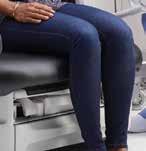
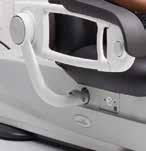
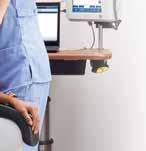











Automation at the point of care that can help ensure a higher level of standardization, minimizing human variables while maximizing consistency and data accuracy.


Seamless connectivity to the EMR saves time and reduces the likelihood of data transcription errors.

Don’t let imitators fool you in the new year, ensure you have authentic infection prevention products.

Increasing global demand for gloves and PPE created a tidal wave of inexperienced and unreliable entrepreneurs entering the marketplace, sourcing and marketing products without provenance, quality or proven compliance in the US.
“ In times like these you must protect yourself and your customers by ensuring they have the authentic, reliable infection prevention products needed. ”
Ventyv® is the premier brand of Sri Trang USA, Inc., a member of the Sri Trang Group. Sri Trang is a proven glove producer that has been protecting the world against infection since 1991.
If you aren’t talking to us it’s not Sri Trang.
Visit ventyv.com/rep or sritrangusa.com/rep for more information.